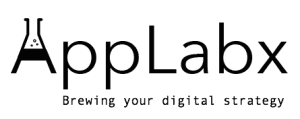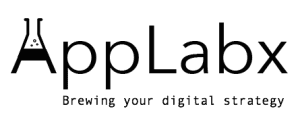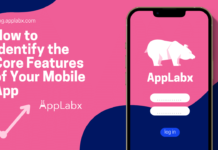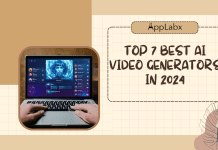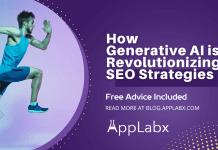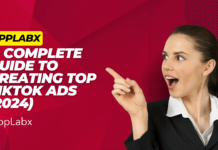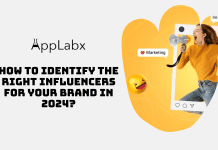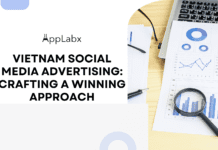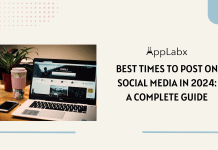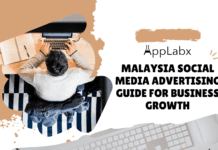Key Takeaways
- Short-form video, AI-driven personalization, and social commerce dominate social media marketing strategies in 2025.
- Building private communities and leveraging authentic content like UGC and EGC are key to fostering trust and engagement.
- Marketers must adopt multi-platform strategies, integrate immersive technologies like AR/VR, and prioritize data privacy compliance.
In 2025, social media marketing is no longer just an optional component of a digital strategy—it is a fundamental pillar that defines brand visibility, consumer engagement, and business growth. As the digital landscape continues to evolve at a breakneck pace, businesses, marketers, and creators face both unprecedented opportunities and complex challenges in navigating the ever-changing world of social media.

The social media ecosystem in 2025 is more dynamic, diversified, and data-driven than ever before. With over 5 billion active social media users globally, platforms have transformed from simple networking sites into sophisticated marketing engines that drive consumer behavior, influence purchasing decisions, and foster real-time interactions between brands and audiences. The exponential growth of video content, the rise of AI-powered personalization, and the dominance of micro-communities are reshaping how businesses connect with their target markets.
What worked in previous years is no longer sufficient. Traditional strategies such as static posting schedules or generic paid advertisements are rapidly being replaced by more immersive experiences powered by technologies like augmented reality (AR), virtual reality (VR), and artificial intelligence (AI). Moreover, the introduction of algorithm-driven content discovery, social commerce integrations, and privacy-centric policies has forced marketers to rethink how they engage users while balancing creativity with compliance.
Another critical factor shaping social media marketing in 2025 is the increasing importance of authenticity and trust. Consumers are becoming more discerning, favoring brands that demonstrate transparency, social responsibility, and meaningful connections. Influencer marketing has evolved as well, shifting from celebrity endorsements to collaborations with nano- and micro-influencers, who offer higher engagement rates and stronger community trust.
Additionally, the landscape has been further fragmented with the emergence of new platforms and niche networks catering to specific audiences, alongside the continued dominance of giants like Instagram, TikTok, LinkedIn, YouTube, Facebook, X (formerly Twitter), and regional platforms that hold significant influence in localized markets. Each platform now demands tailored strategies, unique content formats, and platform-specific optimization techniques.
From an operational standpoint, marketers in 2025 are leveraging advanced analytics, machine learning, and predictive algorithms to craft data-informed campaigns that deliver measurable results. The integration of social commerce—seamlessly combining e-commerce with social experiences—is redefining the customer journey, making it shorter, more interactive, and heavily reliant on peer recommendations and user-generated content.
Equally significant is the evolving regulatory environment. With stricter data protection laws, third-party cookie restrictions, and growing scrutiny over misinformation and online safety, social media marketing requires a fine balance between innovation and ethical responsibility.
This comprehensive guide delves deep into the state of social media marketing in 2025, unpacking the key trends, platform evolutions, emerging technologies, and actionable strategies that businesses must adopt to thrive in this new era. Whether you are a small business owner, a digital marketer, a content creator, or a corporate brand strategist, this article offers a holistic and insightful outlook designed to equip you with the knowledge and tools to navigate the complexities of modern social media.
By the end of this guide, you will have a clear understanding of how to adapt your social media marketing strategies to not only stay relevant but also to achieve sustainable growth in the rapidly transforming digital landscape of 2025.
But, before we venture further, we like to share who we are and what we do.
About AppLabx
From developing a solid marketing plan to creating compelling content, optimizing for search engines, leveraging social media, and utilizing paid advertising, AppLabx offers a comprehensive suite of digital marketing services designed to drive growth and profitability for your business.
AppLabx is well known for helping companies and startups create world-class AI agents.
At AppLabx, we understand that no two businesses are alike. That’s why we take a personalized approach to every project, working closely with our clients to understand their unique needs and goals, and developing customized strategies to help them achieve success.
If you need a digital consultation, then send in an inquiry here.
Social Media Marketing in 2025: A Comprehensive and Insightful Outlook
- Introduction to Social Media Marketing in 2025: A Data-Driven and Transformative Outlook
- The Evolving Social Media Landscape in 2025: A Paradigm Shift in Digital Engagement
- Global Social Media Market in 2025: Size, Growth, and User Dynamics
- Dominant Social Media Platforms in 2025: Strategic Relevance, Growth, and Audience Dynamics
- Platform-Specific Engagement Rates in 2025: A Comprehensive Analysis
- The Rise of Emerging Social Media Platforms in 2025
- Key Trends Shaping Social Media Marketing in 2025
- Authenticity and User-Generated Content (UGC): A Strategic Imperative in 2025
- The Power of Influencer Marketing in 2025: A Pillar of Digital Strategy
- The Rise of Social Commerce in 2025: Revolutionizing the Buyer’s Journey
- AI Integration in Social Media Marketing 2025: A New Era of Hyper-Personalized, Data-Driven Campaigns
- Community Building and Private Networks: The Strategic Imperative for Social Media Marketing in 2025
- The Transformative Power of AR and VR in Social Media Marketing 2025
- Strategic Imperatives for Social Media Marketers in 2025
- Key Challenges and Strategic Considerations for Social Media Marketing in 2025
- Strategic Recommendations for Social Media Marketing Success in 2025
1. Introduction to Social Media Marketing in 2025: A Data-Driven and Transformative Outlook
The social media marketing landscape in 2025 has undergone a profound transformation, reshaping how brands interact with audiences, craft content, and drive revenue. No longer limited to mere broadcasting platforms, social media ecosystems have evolved into sophisticated commerce engines, personalized content hubs, and critical touchpoints for consumer decision-making.
The Rise of a Hyper-Connected Global Audience
- Global Reach
- Social media users are projected to surpass 5.42 billion by 2025.
- This figure represents approximately 62.3% to 64% of the global population, demonstrating the universal penetration of social platforms.
- Mobile-first usage dominates, with over 92% of users accessing platforms via smartphones.
- Market Expansion
- Total global social media ad spend is forecasted between $270 billion and $286.5 billion in 2025.
- This marks a 14x growth since 2015, reflecting the deep integration of paid strategies in brand outreach.
Key Drivers of Social Media Marketing in 2025
1. The Video-First Era
- Short-form Dominance
- 78% of consumers prefer discovering products via short-form videos.
- Platforms like TikTok, Instagram Reels, and YouTube Shorts lead this trend.
- Projected ad spend on short-form video to hit $111 billion in 2025.
- Interactive and Live Content Growth
- Real-time interaction via live streams and Q&A sessions has become critical for audience engagement.
- Augmented reality filters and interactive polls are enhancing user experiences.
2. Artificial Intelligence (AI) and Automation
- Adoption Rate
- 93% of marketers confirm that AI significantly reduces creative fatigue.
- 90% of top-performing brands utilize AI for hyper-personalized content delivery.
- AI Capabilities in 2025
- Predictive analytics for audience targeting.
- Automated content generation based on engagement data.
- AI-driven sentiment analysis for real-time brand health monitoring.
| AI Applications in Social Media Marketing (2025) | Impact |
|---|---|
| Predictive Targeting | Higher ROI and lower CPA |
| Automated Content Suggestions | Reduces creative workload |
| Sentiment Analysis | Real-time reputation tracking |
| AI-Powered Chatbots | 24/7 Customer Engagement |
3. The Evolution of Influencer Marketing
- Market Value Growth
- Influencer marketing is projected to reach $33 billion in 2025.
- Shift Toward Micro and Nano-Influencers
- Smaller influencers outperform macro influencers in engagement rates and trustworthiness.
- Brands prioritize authentic collaborations over generic sponsorships.
| Influencer Type | Follower Range | Engagement Rate (Avg.) | Preferred By Brands For |
|---|---|---|---|
| Nano | 1K – 10K | 7% – 10% | High trust, niche markets |
| Micro | 10K – 100K | 3% – 6% | Targeted audiences, strong engagement |
| Macro | 100K – 1M | 1% – 3% | Wider reach, moderate trust |
| Mega | 1M+ | <1% | Brand awareness, mass exposure |
4. The Surge of Social Commerce
- Explosive Growth
- Social commerce expected to reach $2.9 trillion by the end of 2025.
- Seamless Shopping Experiences
- Integration of in-app checkouts on platforms like Instagram, TikTok, Facebook, and Pinterest.
- Shoppable livestreams and influencer-driven storefronts are mainstream.
- Customer Journey Shortened
- From discovery to purchase—all happening within the social platform.
| Social Commerce Features (2025) | Benefit to Businesses |
|---|---|
| In-App Checkout | Reduced friction, higher conversions |
| Shoppable Posts | Easier impulse buying |
| Live Stream Shopping | Real-time product demonstration |
| Influencer Storefronts | Enhanced trust, wider reach |
5. Privacy-First Marketing and Regulatory Challenges
- Data Privacy Evolutions
- Consumer Trust as a Competitive Advantage
- Transparency in data usage is mandatory.
- Brands that prioritize ethical marketing practices gain higher loyalty.
Major Trends Defining Social Media Marketing in 2025
| Trend | Description | Impact on Brands |
|---|---|---|
| AI-Powered Personalization | Content dynamically tailored per user | Higher engagement, better retention |
| Rise of Micro-Communities | Niche, interest-based communities dominate | Improved targeting and relevance |
| Short-Form & Snackable Content | Focus on rapid-consumption video and interactive formats | Faster conversions, better engagement |
| Social Commerce Integration | Shopping embedded within social media | Drives sales without leaving the platform |
| Privacy-Driven Strategies | Compliance with evolving privacy laws | Builds long-term trust |
| AR/VR Experiences | Immersive ads, virtual try-ons, branded filters | Elevated customer experiences |
Strategic Imperatives for Brands in 2025
- Agility is Non-Negotiable
- Brands must adapt quickly to platform changes and algorithm updates.
- Data-Driven Decision Making
- Success depends on leveraging first-party data, predictive analytics, and AI-driven insights.
- Human-Centric Storytelling
- Content must prioritize authenticity, empathy, and value-driven narratives.
- Platform-Specific Strategy Deployment
- A one-size-fits-all approach fails; businesses must tailor content for each channel’s algorithm and audience behavior.
- Ethical Marketing Leadership
- Transparency, sustainability, and social responsibility are not optional but essential for long-term brand equity.
Conclusion: Setting the Stage for the Future of Social Media Marketing
Social media marketing in 2025 is a convergence of technology, creativity, and consumer empowerment. Brands that invest in AI, social commerce infrastructure, data privacy compliance, and authentic engagement models will outperform those that cling to outdated methods. As the digital landscape continues to evolve, the brands that balance automation with humanity will lead the way in this dynamic era of connection-driven commerce.
2. The Evolving Social Media Landscape in 2025: A Paradigm Shift in Digital Engagement
The year 2025 marks a definitive turning point in the evolution of social media. Platforms that were once primarily spaces for interactive social networking have matured into full-fledged media ecosystems. This evolution reflects not merely a technological progression but a fundamental transformation in how audiences consume content, interact with brands, and participate in online communities.
The distinction between “social media” and “mainstream media” has become increasingly blurred. While algorithm-driven content feeds dominate user experiences, there remains a parallel and growing demand for authentic human connection, privacy, and community-driven engagement.
The Rise of a Media-First Social Ecosystem
From Social Networking to Media Consumption
- Social media platforms have shifted toward functioning as primary media consumption hubs, rather than simple networking tools.
- Passive consumption dominates, with users spending more time scrolling algorithmically curated content, videos, and reels.
- Major platforms like TikTok, YouTube, Instagram, Facebook, and LinkedIn are now viewed as entertainment, education, and commerce engines.
Key Drivers Behind the Evolution
- Global Internet Penetration:
- As of 2025, the global internet user base has expanded beyond 5.6 billion users, covering over 69% of the world population.
- This reflects a growth rate exceeding 6.1% year-over-year, primarily driven by increasing smartphone accessibility and lower data costs globally.
- Mobile-First Behavior:
- Over 93% of social media interactions now occur on mobile devices.
- Platforms are optimized for vertical video, short-form content, and seamless mobile experiences.
| Metric | 2022 | 2025 (Projected) | Growth Rate |
|---|---|---|---|
| Global Internet Users | 5.3B | 5.6B | +6.1% YoY |
| Social Media Users | 4.9B | 5.42B | +10.6% |
| Mobile-First Social Usage | 89% | 93% | +4% |
The Social Fatigue Paradox and User Behavior Shift
Rising Social Fatigue Amid Growing Usage
- Despite the growth in total user numbers, a phenomenon known as “social fatigue” has become increasingly pronounced.
- Users are becoming overwhelmed by excessive content, advertising saturation, and algorithmic overload.
Bifurcation of Engagement Patterns
- Public Platforms for Passive Consumption:
- Users primarily scroll through videos, memes, and news without direct interaction.
- Feeds on Instagram, TikTok, Facebook, and X (formerly Twitter) serve as entertainment streams rather than interaction channels.
- Private Platforms for Authentic Interaction:
- Rising migration toward private, controlled communities offering safer, more meaningful engagement.
- Platforms like Discord, Slack, Facebook Groups, and even nostalgia-driven platforms such as Keek and SpaceHey are gaining traction for deeper conversations and trust-building.
| Platform Type | Primary Purpose (2025) | User Behavior |
|---|---|---|
| Public Platforms | Media consumption, entertainment | Passive scrolling, light reactions |
| Private Platforms | Community-driven conversations | Deep engagement, trust-building |
Emergence of Niche Digital Communities
The Growth of Micro-Communities
- Consumers are increasingly drawn to niche communities based on specific interests, values, or professions.
- These micro-communities offer personalized, algorithm-free interactions and foster a greater sense of belonging.
Examples of Thriving Private Communities
- Discord: Gaming, crypto, education, creator communities.
- Slack: Professional and interest-based private groups.
- Facebook Groups: Local, hobby-based, and support communities.
- SpaceHey & Keek: Retro-inspired platforms fostering minimalist, interaction-focused environments.
| Platform | Primary User Base | Engagement Focus |
|---|---|---|
| Discord | Creators, gamers, tech | Real-time chat, events, deep discussion |
| Slack | Professionals, hobbyists | Project-based, collaboration |
| Facebook Groups | General public | Local interests, support, hobbies |
| SpaceHey | Retro digital natives | Profile-based interaction |
The Consumer Hesitation Reflex: Rising Skepticism in 2025
Declining Trust in Public Digital Spaces
- Increasing incidents of misleading advertisements, scams, and AI-generated misinformation have heightened consumer skepticism.
- Users now exhibit a “hesitation reflex”, pausing before engaging with content, clicking ads, or trusting brand claims.
Trust as a Competitive Advantage
- Brands that prioritize transparency, ethical advertising, and community-driven narratives can outperform competitors.
- Peer validation, user-generated content (UGC), and authentic influencer collaborations are now more effective than traditional ads.
| Factor Driving Hesitation | User Concern | Brand Solution |
|---|---|---|
| Misinformation | Trust erosion | Fact-checked content, verified profiles |
| Scam Ads | Fear of fraud | Transparent policies, user reviews |
| Overuse of AI | Authenticity concerns | Balance automation with human-driven content |
| Privacy Violations | Data misuse skepticism | First-party data, privacy-first policies |
The Strategic Imperative: A Dual Approach to Social Media in 2025
Strategy for Public Media Platforms
- Leverage platforms like TikTok, YouTube, Instagram, Facebook, and LinkedIn primarily as media distribution channels.
- Focus on:
- High-volume content production.
- Viral, short-form, snackable videos.
- Paid media amplification for broad reach.
- SEO-driven content optimization for discoverability.
Strategy for Private Social Communities
- Build or join private networks where deeper connections, trust, and loyalty are nurtured.
- Focus on:
- Exclusive content, early releases, and behind-the-scenes access.
- Community-based campaigns, feedback loops, and live interactions.
- Long-term relationship building over transactional marketing.
| Approach | Public Media Platforms | Private Communities |
|---|---|---|
| Content Objective | Visibility, reach, awareness | Loyalty, trust, deep engagement |
| Engagement Style | Passive, broad | Intimate, meaningful |
| Key Metrics | Impressions, views, clicks | Retention, member growth, interaction quality |
| Tools & Tactics | Ads, SEO, influencer reach, trending content | AMAs, exclusive forums, private chats, memberships |
Conclusion: The Future Belongs to Adaptive Brands
The social media landscape in 2025 demands a hybrid strategy that balances media-driven reach with socially-driven trust. Brands that fail to acknowledge this bifurcation risk being drowned out in the noise of algorithmic feeds or ignored within highly selective communities. The ability to simultaneously execute high-volume content campaigns for public consumption while nurturing deeper connections in private ecosystems will define the market leaders of the digital decade ahead.
3. Global Social Media Market in 2025: Size, Growth, and User Dynamics
The global social media landscape in 2025 stands as a dominant force within the digital economy, characterized by exponential growth in both user adoption and advertising investment. As the digital frontier continues to expand, social media has become an indispensable channel for brand visibility, customer acquisition, and revenue generation. The unprecedented acceleration of mobile usage, coupled with shifting consumer behaviors, is reshaping how businesses engage with audiences worldwide.
Explosive Growth in the Social Media User Base
Unprecedented User Expansion
- Global Reach in 2025:
- Total global social media users reach 5.42 billion, equating to 62.3% to 64% of the world’s population.
- Annual growth rate stands at 5.6%, introducing approximately 266 million new users in just one year.
- Projections indicate the user base will surge to nearly 6.05 billion by 2027, underscoring sustained global adoption.
Multi-Platform Behavior is the Norm
- Users actively engage with an average of 6.7 to 7.2 social platforms per month.
- A single-platform marketing strategy is now obsolete—multi-channel engagement is imperative for brands.
- Cross-platform behavior drives the demand for omnipresent brand strategies, with consistent messaging across diverse ecosystems.
Mobile-First Dominance
- Over 99% of social media users access platforms via smartphones, making mobile optimization an absolute necessity.
- Platforms such as TikTok, Instagram, Facebook, and YouTube are now primarily designed with mobile-first experiences in mind.
- Vertical video, instant stories, and swipe-friendly interfaces dominate user experiences.
Global Social Media User Growth and Projections
| Metric | 2025 | 2027 (Projected) |
|---|---|---|
| Total Social Media Users | 5.42 billion | 6.05 billion |
| Percentage of Global Population | 62.3% – 64% | ~70% |
| Annual User Growth Rate | +5.6% | +5.4% |
| Average Platforms Used Per Person | 6.7 – 7.2 platforms/month | ~7.5 platforms/month |
| Mobile Access Percentage | >99% | >99% |
The Surge in Social Media Advertising Spend
Unstoppable Growth Trajectory
- Total Social Media Ad Spend (2025):
- Estimated between $270 billion and $286.5 billion, a staggering leap from $19.8 billion in 2015, reflecting over 14x growth.
- Projected Ad Spend (2029):
- Set to reach $466.56 billion, with a Compound Annual Growth Rate (CAGR) of 9.37% from 2025 to 2030.
Mobile-Centric Ad Revenue
- 83% of total social media ad revenue is projected to come from mobile by 2030.
- This transition underscores the critical need for mobile-first ad formats such as short-form videos, interactive stories, and in-app shopping experiences.
Share of Overall Digital Advertising
- 3 out of every 10 digital advertising dollars are allocated to social media.
- This reflects the increasing centrality of social platforms in the broader advertising ecosystem.
Social Media Advertising Spend Projections
| Metric | 2025 | 2029 (Projected) |
|---|---|---|
| Global Social Media Ad Spend | $270B – $286.5B | $466.56B |
| Growth from 2015 to 2025 | 14x | – |
| Annual Growth Rate (CAGR 2025–2030) | 9.37% | 9.37% |
| Share of Global Digital Advertising | 30% | >35% |
| Mobile’s Share of Social Media Ad Revenue | ~75% | 83% |
Consumer Interaction Dynamics in 2025
Social Media as the Leading Source of Brand Discovery
- 48% of consumers report interacting with brands more frequently on social media compared to the previous six months.
- For the crucial 16–34 age demographic, social media ads are the top driver of brand awareness.
- 57% of users follow brands specifically to stay updated on new products and services.
Social Media’s Impact on Offline Behavior
- 63% of consumers report making plans to visit a business following a positive social media interaction.
- Social commerce, powered by seamless in-app purchase functionalities, is rapidly replacing traditional browsing-to-buying funnels.
User Attention Dynamics: Rising Competition and Ad Fatigue
Intensifying Competition for Attention
- With 5.42 billion users juggling 6.7 to 7.2 platforms monthly, the volume of competing content is unprecedented.
- On average, brands now invest $46.47 per user in social media advertising annually.
The Growing Challenge of Ad Fatigue
- Users are increasingly experiencing ad fatigue, driven by the constant barrage of promotional content.
- This leads to reduced engagement rates, lower conversion effectiveness, and the phenomenon known as the “hesitation reflex”, where consumers become skeptical of branded messages.
Factors Driving the Hesitation Reflex and Ad Fatigue
| Cause of Hesitation/Ad Fatigue | Impact on Users | Brand Response Strategy |
|---|---|---|
| Oversaturation of Ads | Declining attention span, ad blindness | Precision targeting, reduced frequency caps |
| Misinformation and Scams | Erosion of trust | Verified profiles, transparency, user testimonials |
| Poorly Optimized Mobile Experiences | Drop in mobile engagement | Mobile-first design, fast-loading ad creatives |
| Repetitive Ad Content | Engagement drop-off | Creative diversification, UGC integration |
Mobile-First Imperative: The New Advertising Reality
Mobile as the Engine of Revenue
- The overwhelming 99%+ mobile access rate indicates that mobile is no longer an option but the foundation of all social strategies.
- Social platforms prioritize vertical-first content, instant interactions, and frictionless commerce via mobile.
Impact on Advertising Strategy
- Brands must design ads with mobile-native features, including:
- Short-form videos.
- Tap-to-shop functionalities.
- Interactive stories and carousels.
- Optimized loading speeds for low-data environments.
| Mobile Advertising Feature | Purpose | Effectiveness |
|---|---|---|
| Vertical Video | Full-screen immersive experience | Highest engagement rate |
| In-App Checkout | Streamlines purchase journey | Boosts conversions significantly |
| Shoppable Stories | Enables instant product discovery | Drives impulse buys |
| Fast-Loading Ads | Improves user experience on mobile networks | Reduces bounce rates |
Conclusion: The Future of the Global Social Media Market
The global social media market in 2025 has evolved into a sophisticated, mobile-driven ecosystem where user growth, advertising investment, and consumer behavior converge to redefine the digital marketing landscape. Success in this environment demands that brands go beyond generic advertising. They must embrace multi-platform strategies, prioritize mobile-native experiences, leverage authentic storytelling, and combat ad fatigue with precision targeting and transparent communication.
Those who adapt to this mobile-first, trust-driven paradigm will dominate in an increasingly competitive and fragmented digital economy.
4. Dominant Social Media Platforms in 2025: Strategic Relevance, Growth, and Audience Dynamics
The social media landscape in 2025 is a dynamic and multifaceted ecosystem, shaped by a blend of established giants and emerging disruptors. Each platform commands a unique demographic footprint, engagement behavior, and strategic value proposition for marketers. Understanding the intricate nuances of these platforms is pivotal for brands aiming to maximize reach, engagement, and return on investment.
Platform Hierarchy: User Demographics and Strategic Value
| Platform | Monthly Active Users (MAU) | Primary Age Group | Key Strengths | Strategic Relevance |
|---|---|---|---|---|
| 3.07B (2025), 3.1B (2027) | 25-34 (31.1%) | Commerce, News | Best for broad reach, conversions | |
| YouTube | 2.9B | 18-49 (93% US) | Video dominance | Long-form & short-form video, high engagement |
| 2.8B | 18-44 | Messaging | CRM, direct communication | |
| 2B | 18-24 (31.7%) | Product discovery | Visual commerce, influencer marketing | |
| TikTok | 1.92B | 25-34 (35.3%) | Viral content | Gen Z & millennial-driven trends, high engagement |
| 1.34B | 18-44 | Super app model | Commerce & social in Asia | |
| 1B | 25-54 | B2B lead gen | Top for B2B marketing and high-income audiences | |
| X (Twitter) | 611M | 25-44 | Real-time updates | Declining MAU, but strong for brand voice |
| 553M | 18-24 (42% Gen Z) | Visual discovery | E-commerce, lifestyle branding | |
| 49M (2025), 556.59M (2028) | 18-29 (46%) | Niche communities | High engagement in interest-based groups | |
| Threads | 285M | 18-35 | Text-based social | Emerging as a fast-growing platform |
| Snapchat | ~500M | Under 25 (60%) | AR, visual chat | Gen Z engagement but showing signs of plateau |
Platform Analysis: User Behavior and Marketing Utility
- MAU: 3.07 billion, projected to exceed 3.1 billion by 2027.
- Demographics:
- Largest segment: 25-34 (31.1%).
- Gender split: 56.8% male, 43.2% female.
- Engagement:
- Average time spent: 32 minutes daily.
- Younger users (18–24) spend only 22 minutes per day.
- Strategic Strengths:
- Top platform for direct purchases (39%).
- Trusted source of news for 52% of US adults.
- Utilized by 86% of global marketers.
- Strategic Role:
- Best for commerce-driven campaigns, retargeting, and large-scale awareness.
YouTube
- MAU: 2.9 billion globally.
- Demographics:
- Used by 93% of US adults aged 18–49.
- 66% of Gen Z use it to engage with brands.
- Engagement:
- Average usage: 48.7 minutes per day.
- Key Insights:
- YouTube Shorts is rapidly competing with TikTok for short-form engagement.
- Strategic Role:
- Dominates both long-form educational content and short-form viral video.
- MAU: 2.8 billion.
- Regional Dominance: Particularly strong in South Asia, Africa, and Latin America.
- Utility:
- Core tool for real-time communication, CRM, customer support, and private commerce.
- Strategic Role:
- Vital for conversational commerce, appointment booking, and direct service channels.
- MAU: 2 billion.
- Demographics:
- 60% under 35.
- Largest cohort: 18–24 (31.7%).
- Consumer Behavior:
- 61% use it for product discovery.
- 72% of Gen Z prefer it for customer care interactions.
- Strategic Role:
- Highly effective for visual branding, influencer marketing, and e-commerce conversions.
TikTok
- MAU: 1.92 billion.
- Demographics:
- Largest age group: 25–34 (35.3%), followed by 18–24 (30.7%).
- 82% of Gen Z maintain a profile.
- Engagement:
- Android users spend 35 hours monthly on TikTok.
- Media Influence:
- Acts as a news source for 52% of US adults.
- Preferred by 29% of US teens.
- Advertising Reach:
- Potential ad reach of 1.59 billion.
- Strategic Role:
- Best for trend-driven marketing, viral campaigns, and authentic brand storytelling.
- MAU: 1.34 billion.
- Dominance:
- Essential in China and parts of Asia.
- Utility:
- Functions as a super app with embedded payments, e-commerce, and social networking.
- Strategic Role:
- Indispensable for brands targeting Asian markets, blending commerce, payments, and social engagement.
- Users: 1 billion members.
- Demographics:
- 53% from high-income households.
- Engagement:
- 25% of users interact with brand content daily.
- B2B Dominance:
- Utilized by 96% of B2B marketers.
- Generates 80%+ of all B2B social media leads.
- Strategic Role:
- Premier platform for B2B marketing, recruitment, and thought leadership.
X (formerly Twitter)
- MAU: 611 million.
- Demographics:
- Male-dominated, skewed toward 25-44 age groups.
- Engagement:
- 35% of users interact with brand content daily.
- Decline:
- MAU dropped from 400M to 368M in 2024.
- Strategic Role:
- Effective for real-time communication, brand voice, and crisis management, but declining relevance in long-term growth strategies.
- MAU: 553 million, with a 23% usage surge in 2024.
- Demographics:
- 78% female in the US.
- 42% of users are Gen Z.
- Usage:
- Popular for visual inspiration, DIY, fashion, home decor, and shopping.
- Strategic Role:
- Highly effective for e-commerce, lifestyle branding, and product discovery among female and Gen Z users.
- Users: 49 million in 2025, projected to grow to 556.59 million by 2028.
- Demographics:
- 46% of US users are 18–29.
- Engagement:
- Average session time: 18 minutes per visit.
- Strategic Role:
- Powerful for interest-based, niche community marketing and organic engagement through authentic conversation.
Threads (Meta)
- MAU: 285 million as of late 2024, making it the fastest-growing platform.
- Demographics:
- Attracts users primarily aged 18–35.
- Utility:
- Text-first microblogging alternative with growing appeal among audiences seeking real-time discussions without toxicity.
- Strategic Role:
- Emerging as a potential rival to X, particularly valuable for brand thought leadership, announcements, and community building.
Snapchat
- Users: ~500 million globally.
- Demographics:
- 60% of users are under 25.
- Current Status:
- Continues strong Gen Z engagement, but indicators show it’s losing growth momentum.
- Strategic Role:
- Best suited for augmented reality (AR) marketing, filters, and ephemeral content targeting younger demographics.
Platform Performance Matrix: Strategic Utility in 2025
| Platform | User Scale | Engagement Depth | Ad Conversion Potential | Best For |
|---|---|---|---|---|
| Very High | Moderate | High | Commerce, News, Large-scale awareness | |
| YouTube | Very High | Very High | Very High | Video, Education, Entertainment |
| High | High | Medium | CRM, Customer Support, Private Selling | |
| High | High | High | E-commerce, Visual Branding | |
| TikTok | High | Very High | High | Viral Trends, Youth Marketing |
| High | High | High | Asian Markets, Social Commerce | |
| Medium | High | Very High | B2B, Recruitment, Thought Leadership | |
| X (Twitter) | Medium | Moderate | Low | News, Real-Time Brand Voice |
| Medium | High | High | Visual Commerce, Gen Z & Female Audiences | |
| Growing | High | Medium | Niche Communities, Authentic Marketing | |
| Threads | Growing | Moderate | Medium | Text-Based Engagement, Announcements |
| Snapchat | Medium | High (Gen Z) | Medium | AR, Youth Engagement |
Conclusion: Strategic Platform Selection for 2025
In 2025, the success of any social media marketing strategy hinges on the precise alignment between platform demographics, engagement models, and campaign objectives. No longer can brands rely on a singular platform approach. Instead, multichannel strategies that leverage the strengths of each ecosystem are paramount. Whether focusing on commerce-heavy platforms like Facebook and Instagram, video-first strategies via YouTube and TikTok, B2B campaigns on LinkedIn, or community-led growth through Reddit and Discord-style models, the brands that match message to medium will dominate the future of digital engagement.
5. Platform-Specific Engagement Rates in 2025: A Comprehensive Analysis
Engagement rates are a crucial indicator of how effectively content resonates with audiences on different platforms. In 2025, engagement metrics reveal stark contrasts across social media networks, driven by unique content formats, user behaviors, and evolving algorithmic priorities. Marketers must interpret these variations to refine their strategies for maximum reach, conversion, and brand loyalty.
Understanding Engagement Rate Variability Across Platforms
Key Observations:
- Platform Algorithms Dictate Engagement:
- Platforms such as TikTok and YouTube Shorts prioritize virality, elevating highly interactive content.
- In contrast, platforms like Facebook and Instagram are shifting towards maximizing reach rather than fostering deep engagement.
- Engagement is Not Uniform:
- Variations arise due to content type, audience behavior, and regional factors.
- Disparities in reported engagement rates stem from different analytical models and datasets.
Detailed Engagement Rate Breakdown by Platform (2025)
TikTok
- Average Engagement Rate:
- Varies between 2.50% and 4.86% based on differing studies.
- Key Drivers:
- The For You Page algorithm amplifies highly engaging short-form videos.
- Rewards content that sparks conversation, shares, and trends.
- Strategic Takeaway:
- Best suited for organic reach, viral campaigns, and influencer-driven storytelling.
- Average Engagement Rate:
- Peaks at 6.50%, the highest across all mainstream platforms.
- Key Drivers:
- Professional intent leads to more meaningful interactions such as comments, shares, and thoughtful engagement.
- Strategic Takeaway:
- Ideal for B2B marketing, thought leadership, and lead generation.
YouTube
- Average Engagement Rate:
- 4.41%, with YouTube Shorts closely rivaling TikTok for engagement.
- Key Drivers:
- Mixed long-form and short-form content maximizes watch time and interaction.
- Strategic Takeaway:
- Effective for education, entertainment, product demonstrations, and influencer collaborations.
Threads (Meta)
- Average Engagement Rate:
- 4.51%, outperforming X (formerly Twitter).
- Key Drivers:
- Focused on community-driven discussions and fresh text-based content.
- Strategic Takeaway:
- Emerging as a high-engagement platform for brands adopting conversational and transparent communication.
- Average Engagement Rate:
- 3.46%.
- Key Drivers:
- Users display high purchase intent, especially for DIY, fashion, home decor, and lifestyle content.
- Strategic Takeaway:
- Best for visual storytelling, product discovery, and driving e-commerce conversions.
- Average Engagement Rate:
- Declined significantly to 0.50% (a 28% drop year-over-year).
- Other sources report an average of 1.16%.
- Key Drivers:
- Algorithm prioritizes reach and ad visibility over organic engagement.
- Strategic Takeaway:
- Remains effective for brand awareness, influencer marketing, and social shopping, but organic reach requires innovative strategies.
- Average Engagement Rate:
- Widely reported between 0.15% and 5.07%, depending on the content type and source.
- Key Drivers:
- Saturation and aging user demographics contribute to lower average engagement.
- Strategic Takeaway:
- Functions primarily as a paid media channel rather than an organic engagement driver.
X (formerly Twitter)
- Average Engagement Rate:
- Fluctuates between 0.15% and 2.31%.
- Key Drivers:
- Audience fragmentation, algorithm instability, and reduced daily active usage contribute to inconsistent engagement.
- Strategic Takeaway:
- Effective for real-time updates, crisis communications, and viral conversations, but limited in sustained engagement.
Engagement Rate Matrix: Platform Comparison (2025)
| Platform | Low Estimate (%) | High Estimate (%) | Engagement Strength | Primary Content Type | Best For |
|---|---|---|---|---|---|
| TikTok | 2.50 | 4.86 | Very High | Short-Form Video | Virality, Youth Engagement, Trends |
| 6.50 | 6.50 | Highest | Professional/Thought Content | B2B Marketing, Lead Generation | |
| YouTube | 4.41 | 4.41 | High | Video (Long & Short) | Education, Tutorials, Product Reviews |
| Threads | 4.51 | 4.51 | High | Text & Microblogging | Brand Voice, Conversations, Announcements |
| 3.46 | 3.46 | High | Visual Boards, Guides | Shopping, Lifestyle, DIY | |
| 0.50 | 1.16 | Moderate to Low | Visual, Stories, Reels | Awareness, Influencers, E-commerce | |
| 0.15 | 5.07 | Low | Mixed (Video, Text, Groups) | Paid Reach, Retargeting, Marketplace | |
| X (Twitter) | 0.15 | 2.31 | Low | Microblogging, Threads | Real-Time News, Updates, Discussions |
Engagement Insights: Trends and Takeaways
High-Engagement Leaders:
- LinkedIn, YouTube, Threads, TikTok, and Pinterest dominate engagement metrics due to niche relevance, strong algorithms, or professional-driven interactions.
Declining Organic Engagement:
- Instagram, Facebook, and X show significant declines in engagement for organic posts, increasingly reliant on paid promotion to maintain visibility.
Algorithm Prioritization Shifts:
- Platforms are generally moving towards algorithmic models that prioritize ad delivery and short-form, rapid consumption content.
- Authenticity, niche-driven storytelling, and creator partnerships are now essential to sustaining engagement.
Conclusion: Strategic Engagement Planning in 2025
The evolving dynamics of engagement rates in 2025 emphasize that no single platform offers universal engagement success. Brands must align their content formats, campaign objectives, and target demographics with platforms demonstrating the highest contextual engagement. Platforms like LinkedIn, TikTok, YouTube, and Threads offer substantial organic opportunities, while Facebook and Instagram now require more sophisticated paid strategies to drive meaningful results.
A data-driven, platform-specific approach is not merely optional but a fundamental necessity for thriving in the competitive social media ecosystem of 2025.
6. The Rise of Emerging Social Media Platforms in 2025
As the digital ecosystem undergoes rapid transformation, a new wave of emerging platforms is reshaping the social media landscape in 2025. These platforms respond directly to user fatigue, evolving preferences for authenticity, and the demand for niche, community-driven interactions. Their increasing prominence signals a pivotal shift that marketers must strategically adapt to in order to remain competitive and relevant.
Key Emerging Social Media Platforms (2025)
Lemon8: The Lifestyle and Wellness Powerhouse
- Ownership: ByteDance (parent company of TikTok).
- User Growth:
- Surged with an astonishing 200% growth rate over the past year.
- Content Focus:
- Heavily centered on lifestyle, wellness, fashion, and self-improvement.
- Functions as a hybrid between Instagram’s visual storytelling and Pinterest’s content discovery.
- Strategic Advantage:
- Appeals to consumers looking for aesthetic-driven yet informative content.
- Marketing Implication:
- Highly effective for health, beauty, travel, wellness, and e-commerce brands.
BeReal: Championing Authenticity
- MAU: 90 million active users with continued stable growth.
- Value Proposition:
- Promotes unfiltered, real-life moments.
- Limits posts to once per day, reinforcing genuine sharing without algorithmic pressure.
- Audience:
- Primarily Gen Z and younger millennials.
- Marketing Potential:
- Useful for brand transparency, behind-the-scenes content, and humanizing marketing strategies.
Hive Social: The Custom Feed Revival
- Unique Selling Point:
- Offers customizable feeds blending an old-school MySpace aesthetic with modern UX.
- User Behavior:
- Attracts users desiring less algorithm-driven feeds and more chronological, interest-based exploration.
- Strategic Utility:
- A growing space for independent creators, artists, and niche community builders.
Nostalgia-Driven Platforms: Simplicity Returns
- Key Players:
- Keek, SpaceHey, PI.FYI, and others.
- Core Proposition:
- Revival of early internet principles: simplicity, privacy, and authentic connection.
- Target Users:
- Digitally fatigued Gen Z, younger millennials, and nostalgia-seeking internet users.
- Strategic Role for Brands:
- Effective for fostering micro-communities, underground culture engagement, and authenticity-driven campaigns.
Comparative Analysis: Emerging vs. Established Platforms (2025)
| Platform Type | Primary Value | User Growth Rate | Core Audience | Engagement Quality | Best For |
|---|---|---|---|---|---|
| Lemon8 | Visual lifestyle + community | 200% | Millennials, Gen Z | High | Lifestyle, Wellness, Fashion, E-commerce |
| BeReal | Authenticity, real-time sharing | Growing steadily | Gen Z, Young Millennials | Very High | Transparency, BTS content, Brand intimacy |
| Hive Social | Custom feeds + nostalgia | Moderate | Indie creators, Niche users | High | Niche marketing, Community engagement |
| SpaceHey/Keek/PI.FYI | Nostalgia-driven simplicity | Increasing | Gen Z, Millennials | High | Micro-community, Authentic storytelling |
| Visual storytelling, shopping | Slowing | Gen Z, Millennials | Moderate | E-commerce, Influencer-driven discovery | |
| TikTok | Short-form video virality | Rapid | Gen Z, Millennials | Very High | Viral trends, Product discovery |
| Mass reach, groups, marketplace | Declining (18-24) | Older Millennials, Gen X | Low | Marketplace, Paid media |
Platform Dynamics: Reach vs. Engagement
Shift in Value Proposition
- High Reach, Low Engagement:
- Platforms like Facebook and Instagram offer extensive reach but increasingly prioritize content visibility over organic interaction.
- Engagement rates continue to decline, particularly among younger users.
- Moderate Reach, High Engagement:
- Platforms like TikTok and LinkedIn continue to offer substantially higher engagement rates, suggesting that depth of interaction is replacing raw audience size as the primary KPI.
- Emerging Platforms Offer Intimacy:
- Platforms such as BeReal, Hive Social, and SpaceHey prioritize genuine connections over algorithmic content delivery.
- This presents a valuable opportunity for brands seeking community-first marketing over mass advertising.
Generational Platform Preferences (2025)
| Generation | Preferred Platforms | Declining Platforms |
|---|---|---|
| Gen Z (18-24) | TikTok, Snapchat, BeReal, Instagram, Hive, Lemon8 | Facebook (Usage down 10% in this group) |
| Younger Millennials (25-34) | TikTok, Instagram, YouTube, Threads, Lemon8 | Facebook (reduced usage) |
| Older Millennials & Gen X (35-54) | Facebook, LinkedIn, YouTube, Instagram | TikTok (lower but growing adoption) |
Insights:
- TikTok’s aging upward:
- While once dominated by Gen Z, its largest demographic is now 25-34 (35.3%), signaling millennial migration.
- Facebook’s demographic contraction:
- Continues to retain older users but suffers from significant decline among 18–24-year-olds.
- Instagram remains intergenerational:
- Still popular among both Gen Z and millennials, sustaining relevance in e-commerce and lifestyle spaces.
- Niche platforms cater to digital fatigue:
- Younger demographics, increasingly overwhelmed by mainstream feeds, are pivoting toward platforms with less noise and more meaningful connections.
Strategic Implications for Marketers in 2025
Tailored Platform Strategy Over One-Size-Fits-All:
- Mass Awareness:
- Platforms like Facebook, Instagram, and YouTube remain effective for top-of-funnel brand exposure.
- High-Engagement Community Building:
- TikTok, LinkedIn, Threads, and emerging platforms like BeReal and Hive excel at fostering deeper engagement and conversation.
- Niche Community Activation:
- Marketers targeting hyper-specific interests or authenticity-driven audiences should explore Reddit, Discord, SpaceHey, PI.FYI, and Hive.
- Generational Targeting Is Critical:
- Understanding the migration of users between platforms based on age demographics is essential to prevent loss of relevance and market share.
Conclusion: The Future is Fragmented, Authentic, and Community-Driven
The social media landscape in 2025 is no longer dominated solely by legacy platforms. Instead, the rise of authenticity-first networks, niche-driven communities, and lifestyle-focused apps indicates a profound shift toward more personalized, human-centered digital experiences.
Brands that fail to pivot away from legacy one-size-fits-all marketing strategies risk being left behind. Success in 2025 requires a multi-platform, demographic-aware, and engagement-centric approach—balancing broad reach with community intimacy.
7. Key Trends Shaping Social Media Marketing in 2025
In 2025, the landscape of social media marketing is undergoing a seismic transformation, largely driven by the escalating dominance of video content. This paradigm shift is redefining not only how consumers engage with content but also how brands design comprehensive marketing strategies across every stage of the customer journey.
The Dominance of Video Content in 2025
Video Content: The Undisputed King of Engagement
- Video has transcended its role as a supplementary format, evolving into the primary driver of engagement, conversions, and customer retention across virtually all social platforms.
- The “attention economy” has catalyzed the explosion of snackable, high-impact video formats that deliver information, entertainment, or inspiration within seconds.
Short-Form Video: The Centerpiece of Modern Marketing
- User Preference:
- 78% of consumers now prefer learning about products through short-form video content.
- Specifically impactful for younger demographics: 57% of Gen Z cite short-form video as their preferred discovery tool.
- Performance Metrics:
- Short-form videos generate 2.5x higher engagement compared to long-form formats.
- 66% of marketers rate short-form as the most engaging content type, while 47% identify it as the most likely to go viral.
- Optimal Video Length:
- The sweet spot lies between 11 and 60 seconds.
- 33% of marketers pinpoint 31–60 seconds as the ideal duration for maximum engagement.
- Monetary Investment:
- Global ad spend on short-form video is projected to surpass $111 billion in 2025, underlining its dominance.
- Platform Insights:
- TikTok, Instagram Reels, YouTube Shorts, and Facebook Reels are the primary beneficiaries of this video-first revolution.
- Meta reports that 60% of user time on Facebook and Instagram is now spent watching video content.
Long-Form Video: Resurgence Amidst Short-Form Popularity
- Despite the overwhelming preference for short clips, long-form video is regaining relevance—particularly for:
- Educational content, product deep dives, and storytelling.
- YouTube Shorts now supports videos up to 3 minutes, while TikTok is experimenting with formats exceeding 10 minutes.
- This trend underscores that while short-form drives discovery, long-form supports conversion, trust-building, and deeper brand storytelling.
Interactive and Live Video: Elevating User Engagement
- Live Streaming:
- Still highly effective, with 20% of videos on Facebook being live broadcasts.
- Interactive Experiences:
- Incorporating features like polls, quizzes, live Q&A sessions, and clickable elements leads to as much as a 40% uplift in participation.
- Live Shopping:
- Rapidly gaining traction in e-commerce.
- Influencers and brands showcase products in real time, offering instant purchase capabilities directly within the stream.
Data-Driven Insights: Video in 2025
| Metric | Value (2025) | Insight |
|---|---|---|
| Consumer Preference for Short-Form Video | 78% | Dominates product discovery and brand exploration |
| Gen Z Preference for Short-Form | 57% | Critical for younger audience targeting |
| Short-Form Engagement vs. Long-Form | 2.5x Higher | Indicates stronger ROI for short, digestible content |
| Marketers Identifying Short-Form as Best | 66% | Recognize short-form as top for engagement |
| Viral Potential (Marketers’ View) | 47% Say Short-Form Goes Viral Most | Underlines its dominance in reach amplification |
| Ideal Video Length (Marketer Consensus) | 31–60 seconds (33%) | Optimal for balancing depth with brevity |
| Global Ad Spend on Short-Form Video | $111 billion | Major investment priority across platforms |
| User Time Spent on Video (Meta Platforms) | 60% | Majority of time is now video-driven on Facebook and Instagram |
| Facebook Live Video Share | 20% of all video content | Highlights continuing relevance of live experiences |
| Engagement Increase from Interactive Video | +40% | Polls, quizzes, and interactive elements significantly boost engagement |
The Attention Economy: Mastering Instant Impact
Challenges:
- The first 3 seconds are critical; content must instantly captivate or risk being ignored.
- Consumers are increasingly multitasking, leading to shortened attention spans and selective consumption.
Solutions:
- Hyper-Visual Storytelling:
- Bright visuals, rapid scene changes, and motion graphics.
- Sound-Off Optimization:
- Utilize subtitles and on-screen text since a large share of users watch with audio muted.
- Mobile-First Production:
- Prioritize vertical formats (9:16) given the dominance of smartphones for social media use.
- Creative Disruption:
- Brands are moving away from overly polished content toward more authentic, disruptive formats that capture attention quickly.
The Evolution of Video into Full-Funnel Marketing
Beyond Awareness:
- Video is no longer confined to top-of-funnel goals like awareness.
- Now integral across the entire customer journey:
- Discovery → Consideration → Conversion → Retention.
Social SEO Integration:
- Social platforms are evolving into search engines in their own right.
- Users increasingly search TikTok, YouTube, and Instagram for product reviews, how-tos, and recommendations.
Commerce and Conversion:
- Live shopping and click-to-buy features are transforming video from a branding tool to a transactional engine.
- Interactive video not only engages but also drives real-time conversions.
Repurposing Strategy:
- Brands efficiently convert:
- Long-form video → Short-form highlights.
- Webinars → Snackable reels.
- Live streams → Product tutorial clips.
Strategic Takeaways for Brands in 2025
- Adopt a Video-First Strategy:
- Video is no longer optional; it is the core of digital and social media marketing.
- Master Both Short and Long Formats:
- Use short-form for discovery and reach.
- Deploy long-form for education, retention, and deeper engagement.
- Invest in Interactive Experiences:
- Polls, live Q&A, and real-time feedback loops generate stronger consumer connections.
- Leverage Video for Commerce:
- Live shopping and clickable product showcases should be embedded into video strategies.
- Align with Mobile-First Consumption:
- All production, design, and optimization should prioritize vertical video and sound-off accessibility.
Conclusion: Video as the Cornerstone of Social Media Marketing in 2025
Video has evolved into a full-funnel, omnipresent force in social media marketing for 2025. It is no longer a peripheral element but the central pillar driving discovery, engagement, education, and conversion. Brands that fail to prioritize video risk irrelevance in an ecosystem that increasingly rewards visually engaging, fast-paced, and highly interactive content.
Adopting a robust, video-first strategy that spans from short viral clips to long-form educational narratives is not just recommended—it is an absolute necessity for any business aiming to succeed in the competitive digital marketplace of 2025.
8. Authenticity and User-Generated Content (UGC): A Strategic Imperative in 2025
In the hyper-competitive and rapidly evolving landscape of social media marketing in 2025, authenticity has transcended from a desirable trait to an absolute necessity. Consumer skepticism has escalated due to the proliferation of deep fakes, AI-generated content, scams, and deceptive advertising practices, compelling brands to prioritize genuine, relatable content over traditional polished narratives.
The Rising Value of Authenticity in Social Media
Why Authenticity is a Non-Negotiable in 2025
- Over 60% of social media users prioritize trust as the primary factor when deciding to engage with a brand.
- Consumers are increasingly wary of heavily curated, overly branded content, favoring content that feels genuine, raw, and human-centric.
- Deep fakes, misinformation, and AI-generated manipulations have eroded baseline trust, amplifying demand for transparency and authenticity.
The Power of User-Generated Content (UGC)
UGC: The Engine of Trust and Engagement
- 80% of consumers report that they are more likely to trust UGC than traditional advertising.
- UGC achieves 8.7x higher engagement rates than standard branded content.
- On platform-specific levels:
- Instagram UGC yields 70% more engagement compared to brand-generated posts.
- TikTok UGC outperforms branded content by 22% in effectiveness.
- Overall, UGC is 28% more effective than professionally produced advertisements in influencing purchasing decisions.
- 79% of consumers express a stronger comfort level with brands that showcase UGC, perceiving them as more authentic and relatable.
UGC Engagement and Trust Data Matrix (2025)
| Metric | Value (2025) | Impact |
|---|---|---|
| Consumer Trust in UGC | 80% | Preferred over traditional ads |
| UGC Engagement vs. Branded Content | 8.7x higher | Demonstrates superior audience connection |
| Instagram UGC Engagement Uplift | +70% | Compared to standard brand posts |
| TikTok UGC Effectiveness | +22% | Surpasses TikTok brand-created content |
| UGC Effectiveness vs. Traditional Ads | +28% | Drives better conversion and engagement |
| Consumer Comfort with UGC Brands | 79% | Correlates directly to increased trust |
| Increase in UGC Creators YoY | +93% | Indicates a booming creator economy focused on authenticity |
The Lo-Fi Content Revolution
Why Imperfect Content Wins in 2025
- Lo-Fi (low fidelity) content, characterized by unpolished, real-life aesthetics, is dominating social feeds.
- This format resonates because it mirrors the authentic daily experiences of users rather than polished corporate narratives.
- Lo-Fi content significantly reduces production costs while enhancing authenticity.
- Particularly effective on platforms like TikTok, Instagram Reels, and YouTube Shorts, where casual, behind-the-scenes, or candid storytelling thrives.
The Rise of Employee-Generated Content (EGC)
Employees as the New Brand Ambassadors
- EGC is gaining exponential traction, with employee-generated posts:
- Being reshared 24 times more frequently than corporate-branded content.
- Perceived as far more trustworthy and relatable.
- Platforms like LinkedIn, TikTok, and Instagram are ideal ecosystems for leveraging EGC.
- Brands benefit from EGC by:
- Humanizing their operations.
- Enhancing recruitment branding.
- Increasing consumer trust through transparent representation.
Shifting Brand Narratives: From Corporate to Community
The Democratization of Storytelling
- The demand for authenticity signals a monumental shift in marketing dynamics:
- The voice of the consumer now holds equal—if not greater—weight than the brand itself.
- Brands must embrace a community-driven approach, enabling users and employees to be central participants in storytelling.
- This transformation requires:
- Actively sourcing and promoting UGC.
- Building formal systems to encourage EGC creation.
- Loosening rigid brand controls to foster more organic narratives.
Trust as a Revenue Multiplier
- Trust directly correlates with profitability in 2025:
- Brands perceived as authentic enjoy higher engagement, stronger loyalty, and improved conversion rates.
- 49% of consumers unfollow brands due to poor customer service, indicating that authenticity extends beyond content—it is integral to service, communication, and experience.
- Consumers expect brands to be:
- Transparent.
- Responsive.
- Willing to admit mistakes.
Strategic Recommendations for Brands
| Focus Area | Strategy in 2025 |
|---|---|
| Content Production | Prioritize UGC and EGC over studio-produced content. Incorporate Lo-Fi, real-life visuals and narratives. |
| Community Engagement | Build systems to encourage users to share experiences. Utilize branded hashtags, contests, and community forums. |
| Employee Empowerment | Equip employees to share brand stories authentically. Reward and amplify their content on corporate channels. |
| Authenticity-Driven Messaging | Focus on unfiltered communication, real reviews, behind-the-scenes content, and honest customer interactions. |
| Customer Service as Content | Integrate responsive customer service into content strategy; highlight resolutions and customer success stories. |
| Platform Optimization | Deploy UGC heavily on TikTok, Instagram, and LinkedIn, where authenticity translates directly into performance. |
Conclusion: Authenticity as a Growth Catalyst in 2025
In the digital ecosystem of 2025, authenticity is not merely a marketing trend—it is a foundational driver of trust, engagement, and commercial success. Brands that invest in fostering genuine connections through User-Generated and Employee-Generated Content will not only outperform in terms of engagement but also build lasting customer loyalty and market resilience.
The brands that will thrive are those that recognize that the most powerful voice in the market is no longer their own—but that of their community.
9. The Power of Influencer Marketing in 2025: A Pillar of Digital Strategy
In 2025, influencer marketing has evolved into one of the most potent drivers of brand visibility, consumer trust, and conversion in the digital economy. No longer an experimental tactic, it has become a core pillar of modern social media strategies, deeply integrated within the broader creator economy.
Influencer Marketing Industry Growth
Exponential Market Expansion
- The global influencer marketing industry is projected to reach $33 billion by the end of 2025, reflecting a tripling of market value since 2020.
- The broader creator economy—which includes influencers, independent content creators, streamers, and podcasters—is forecasted to grow from $191 billion in 2025 to an astonishing $528.39 billion by 2030.
- This exponential growth is being fueled by the rise of decentralized media consumption, with consumers preferring content from relatable creators over traditional advertising.
Influencer Marketing Growth Projection Table
| Year | Influencer Marketing Market Size (USD) | Creator Economy Size (USD) |
|---|---|---|
| 2020 | $9.7 billion | $104 billion |
| 2025 | $33 billion | $191 billion |
| 2030 | $49 billion (projected) | $528.39 billion (projected) |
Return on Investment (ROI) in Influencer Marketing
Why Influencer Marketing Outperforms Traditional Ads
- Influencer marketing delivers an average ROI of $6.50 for every $1 spent.
- Top-performing campaigns can yield returns as high as $20 per $1 spent.
- Viral campaigns, especially on platforms like TikTok, have achieved up to 12x ROI in just six weeks.
- Overall, influencer marketing provides up to 18x higher ROI compared to conventional digital advertising.
ROI Comparison Matrix: Influencer Marketing vs Traditional Advertising
| Marketing Channel | Average ROI per $1 Spent |
|---|---|
| Influencer Marketing | $6.50 (avg), up to $20+ |
| TikTok Influencer Campaigns | Up to 12x in 6 weeks |
| Traditional Digital Ads | $2.00 – $4.00 |
The Rise of Micro and Nano Influencers
Superior Engagement and Cost Efficiency
- Micro-influencers (10K–100K followers) and nano-influencers (1K–10K followers) dominate engagement metrics:
- They deliver 60% higher engagement rates than mega or celebrity influencers.
- Their niche audience targeting results in more genuine connections, higher trust, and better conversion rates.
- Lower cost per collaboration compared to macro-influencers.
- Preferred by brands for authentic storytelling and targeted marketing campaigns.
Influencer Tiers Performance Table (2025)
| Influencer Type | Followers Range | Average Engagement Rate | Cost Efficiency | Best Use Cases |
|---|---|---|---|---|
| Nano-Influencers | 1K–10K | 8–10% | Very High | Hyper-local, niche marketing |
| Micro-Influencers | 10K–100K | 5–7% | High | Niche audiences, product launches |
| Mid-Tier | 100K–500K | 3–4% | Moderate | Broader awareness + niche targeting |
| Macro-Influencers | 500K–1M | 1–2% | Lower | Mass awareness campaigns |
| Mega/Celebrities | 1M+ | <1% | Lowest | Global reach, brand endorsement |
Gender, Demographics, and Pricing Trends
Compensation and Market Dynamics
- The average cost per influencer collaboration in 2025 is $202, a slight decrease from 2024 due to the rapid influx of new creators.
- Despite female creators dominating the space (70% market share), male influencers command an average of $83 (40%) more per post.
- Adding usage rights for repurposing influencer content increases fees by approximately 39%.
Influencer Pricing Factors Matrix
| Factor | Effect on Price |
|---|---|
| Platform (TikTok, IG) | TikTok generally more cost-effective |
| Gender | Male creators earn 40% more |
| Usage Rights Included | Adds +39% to base price |
| Follower Count | Higher followers = Higher base price |
| Engagement Rate | Higher engagement = Premium pricing |
Platform Preferences for Influencer Campaigns
Where Brands Are Investing in 2025
- Instagram remains the dominant platform for influencer marketing, with 92% of marketers leveraging it.
- TikTok is rapidly gaining market share due to its high engagement rates and cost-effective collaborations.
- YouTube continues to serve long-form storytelling campaigns.
- LinkedIn emerges as a powerful B2B influencer marketing channel, especially for professional services.
Dominant Influencer Niches in 2025
| Niche Category | Performance Notes |
|---|---|
| LGBTQ+ | High engagement, strong community support |
| Comedy & Entertainment | Viral-driven, high visibility |
| Vegan & Sustainability | Trusted for ethical consumption |
| Family & Parenting | Highly trusted for product recommendations |
| Fitness, Athlete & Sports | Effective for lifestyle and performance-based products |
AI-Influencers and The Future of Influence
The Rise of Virtual Creators
- The emergence of AI-generated influencers is transforming the landscape, offering brands cost-effective, scalable content production.
- AI-driven influencers operate 24/7, never face fatigue, and allow hyper-targeted content personalisation at scale.
- However, the authenticity dilemma remains—audiences may prefer human faces for trust-building in emotionally driven sectors.
Strategic Recommendations for Brands in 2025
- Adopt a Hybrid Influencer Model: Combine macro-influencers for reach and micro/nano-influencers for engagement.
- Invest in Long-Term Partnerships: Build sustainable relationships with influencers aligned with brand values rather than one-off sponsorships.
- Leverage Influencer Content: Secure usage rights to repurpose influencer content across ads, websites, and social feeds.
- Diversify Platforms: While Instagram dominates, rapidly growing TikTok and emerging LinkedIn influencers cannot be ignored.
- Explore AI-Influencers: For scalable brand presence, particularly for functional content like product showcases.
Conclusion: Influencer Marketing as a Growth Engine in 2025
Influencer marketing in 2025 is not merely a promotional tactic; it has evolved into a strategic growth engine driving brand equity, trust, and revenue. The intersection of authentic storytelling, niche audience targeting, and measurable ROI makes it indispensable. As consumer trust increasingly shifts toward creators over corporations, brands that adapt to this new paradigm—focusing on micro-influencers, authentic partnerships, and creator-led content—will outpace competitors and dominate the digital landscape.
10. The Rise of Social Commerce in 2025: Revolutionizing the Buyer’s Journey
In 2025, social commerce has transcended its early stages to become a dominant force in the global retail ecosystem. No longer confined to being a supplementary sales channel, it now represents a primary avenue where discovery, engagement, and transactions seamlessly converge within social media platforms.
Global Growth of Social Commerce
Market Expansion and Economic Impact
- The global social commerce market is projected to reach $2.9 trillion by 2025, with forecasts suggesting it will escalate further to $6.2 trillion by 2030.
- This meteoric growth underscores the rising consumer demand for frictionless, integrated shopping experiences within social environments.
- Brands leveraging social commerce are experiencing measurable performance improvements, with those maintaining at least one active social media presence seeing a 32% increase in overall sales.
Social Commerce Market Growth Table
| Year | Global Market Size (USD) |
|---|---|
| 2020 | $560 billion |
| 2025 | $2.9 trillion |
| 2030 | $6.2 trillion (projected) |
Changing Consumer Behaviors in 2025
Adoption of Social Shopping
- 48% of global social media users now purchase products directly within platforms.
- In the United States alone, 69% of consumers are expected to shop via Facebook by 2025.
- 27% of internet users globally express a strong preference for discovering new products through social media rather than traditional e-commerce websites.
- Social commerce is no longer an option but an expectation among digitally native consumers, particularly Millennials and Gen Z.
Top Consumer Behaviors Driving Social Commerce
| Behavior | Percentage |
|---|---|
| Shopping directly on social media platforms | 48% |
| Shopping on Facebook (US) | 69% |
| Preference for product discovery via social | 27% |
Platform Features Powering the Social Commerce Boom
Commerce-Driven Platform Innovations
- Instagram Shops – Enables brands to create full-fledged digital storefronts within the app.
- TikTok Shopping – Leverages short-form video to drive discovery and seamless in-app purchases.
- Facebook Marketplace and Shops – Remain dominant for peer-to-peer selling and branded storefronts.
- Keek’s Offerbox – Allows creators to monetize posts directly, showcasing the fusion of content and commerce.
- YouTube Shopping (Beta) – Integrates live shopping features within video streams and Shorts.
Zero-Click Strategies and Live Shopping Revolution
Seamless, In-Platform Conversion Models
- Zero-click strategies are gaining prominence, aiming to convert users without requiring them to leave the platform.
- 41% of brands report marginal increases in conversions from zero-click tactics, while 30.1% report significant gains.
- Platform-specific conversion improvements:
- TikTok: 32.5%
- Instagram: 23.6%
- Live shopping events, where influencers and brands demonstrate products in real-time, are experiencing explosive growth.
Zero-Click Conversion Performance Matrix
| Platform | Significant Conversion Lift | Key Feature Driving Growth |
|---|---|---|
| TikTok | 32.5% | Video-driven zero-click sales |
| 23.6% | Shoppable reels and stories | |
| 18.4% | Marketplace + Live Commerce |
Dominant Retail Categories in Social Commerce
Industries Thriving in Social-First Shopping
- Apparel & Accessories:
- Holds 55.7% share of total US social commerce activity.
- Highly visual, making it ideal for platforms like Instagram, Pinterest, and TikTok.
- Food & Beverage:
- Global e-commerce sales projected to reach $85.25 billion by 2025.
- Beauty & Skincare:
- Strongly tied to influencer recommendations and video tutorials.
- Home Decor & DIY:
- Benefits from Pinterest and Instagram-driven visual discovery.
- Electronics & Gadgets:
- Grows via product demos, unboxings, and TikTok tech influencers.
Social Commerce Retail Category Breakdown
| Category | Market Share / Revenue (2025) |
|---|---|
| Apparel & Accessories | 55.7% (US) |
| Food & Beverage | $85.25 billion (Global) |
| Beauty & Skincare | Rising (driven by influencer UGC) |
| Home & DIY | Significant on Pinterest, IG |
| Electronics | High growth via TikTok, YouTube |
The Integration of AI, Data, and Personalization
Data-Driven Commerce Transformation
- The seamless nature of in-app shopping generates vast amounts of first-party data, including:
- Browsing behavior
- Purchase intent signals
- Historical buying patterns
- Engagement metrics from live and video content
- AI-driven recommendation engines are increasingly used to power:
- Hyper-personalized product discovery
- Predictive shopping experiences
- Dynamic pricing models based on real-time demand signals
Benefits of AI-Enhanced Social Commerce:
- Enhanced customer lifetime value through tailored recommendations.
- Optimized ad targeting based on richer behavioral data.
- Reduction in cart abandonment due to streamlined, in-platform checkout processes.
Strategic Implications for Brands
Key Takeaways for Businesses in 2025
- Frictionless Path to Purchase:
- Brands must remove barriers between discovery and checkout by utilizing platform-native shops, shoppable posts, and live commerce.
- Prioritize Zero-Click Experiences:
- Focus on delivering content, engagement, and transactions within a single platform ecosystem.
- Leverage Live Commerce:
- Combine influencer marketing with live demonstrations for real-time conversions.
- Invest in Visual Commerce:
- Optimize product catalogs for mobile, vertical formats with rich visuals and video.
- Exploit First-Party Data:
- Use the data generated from social commerce to refine audience segmentation, improve retargeting, and enhance personalized marketing efforts.
Conclusion: Social Commerce as the Future of Retail
In 2025, social commerce is no longer an experimental feature; it has become the future of retail. The convergence of content, community, and commerce has reshaped the consumer journey. Brands that embrace in-platform transactions, leverage zero-click strategies, and harness AI-driven personalization will not only capture immediate sales but also build enduring customer relationships, drive higher lifetime value, and position themselves as leaders in the rapidly evolving digital marketplace.
11. AI Integration in Social Media Marketing 2025: A New Era of Hyper-Personalized, Data-Driven Campaigns
In 2025, Artificial Intelligence (AI) has become an indispensable pillar of modern social media marketing. Its influence extends far beyond automation, fundamentally redefining how brands create content, personalize experiences, predict trends, and engage with audiences at scale.
The Transformative Role of AI in Marketing
AI as the Driving Force Behind Marketing Evolution
- AI is no longer a supplementary tool but a core driver of marketing-managed solutions.
- Its capabilities span from content automation to advanced predictive analytics and hyper-personalization.
- The fusion of AI with marketing strategy enables brands to transition from generic messaging to precision-targeted communication, elevating both customer experience and campaign ROI.
AI-Driven Content Creation in 2025
Revolutionizing the Creative Process
- AI-powered tools now generate diverse content formats:
- Social media captions
- Product descriptions
- Ad copy
- Blog articles
- Video editing via AI tools like Instagram’s MovieGen (launching in 2025) — enables creators to edit videos with simple text prompts.
- 93% of social media professionals believe AI reduces creative fatigue, allowing brands to maintain high-volume content output without compromising quality.
- AI-generated content supports the increasing demand for scalable, visually engaging, and platform-optimized material across TikTok, Instagram Reels, YouTube Shorts, and Threads.
AI Content Impact Table
| Function | AI Tool Example | Impact |
|---|---|---|
| Video Editing | Instagram MovieGen | Reduces editing time, democratizes video creation |
| Social Captions | ChatGPT, Jasper | Generates high-conversion text quickly |
| Ad Copy | Copy.ai, Writer | A/B test variants at scale |
| Blog Generation | Jasper, Writesonic | Increases SEO-driven long-form content output |
Hyper-Personalization at Scale
AI-Enabled Personalization Strategies
- AI algorithms analyze:
- Browsing behavior
- Purchase history
- Engagement patterns
- Sentiment trends
- This enables the delivery of real-time, hyper-personalized content and offers.
- 90% of high-performing businesses use AI to curate personalized experiences, leading to a 200% increase in engagement rates compared to non-personalized campaigns.
Personalization Effectiveness Matrix
| Strategy | Engagement Increase |
|---|---|
| AI-driven content curation | +200% |
| Dynamic product recommendations | +180% |
| Personalized ad retargeting | +150% |
| Customized user journeys | +220% |
Predictive Analytics and Smart Decision-Making
Data-Driven Optimization with AI
- AI predicts consumer behavior with high accuracy by analyzing:
- Historical data
- Purchase trends
- Social sentiment
- Market fluctuations
- Applications include:
- Optimizing ad budgets in real-time
- Automating bid strategies on Meta, TikTok, and Google Ads
- Dynamic pricing based on demand signals
- 66.4% of marketers report enhanced influencer marketing performance due to AI-driven campaign optimization.
AI in Conversational Marketing and Customer Service
The Rise of Smart Chatbots and Virtual Assistants
- AI-powered conversational tools are providing:
- 24/7 customer support
- Real-time lead generation
- Instant product recommendations within social messaging apps (WhatsApp, Messenger, Instagram DM)
- Natural Language Processing (NLP) allows bots to understand sentiment, intent, and context, improving customer satisfaction.
AI Applications in Customer Engagement
| Function | Benefit |
|---|---|
| Chatbots | Always-on support, lead qualification |
| AI-driven DMs | Personalized offers in private chats |
| Sentiment analysis | Adjust messaging based on tone |
| Engagement trend prediction | Suggests optimal posting times |
AI-Powered Creative Automation
Enhancing Human Creativity, Not Replacing It
- AI automates repetitive tasks, including:
- Content resizing for different platforms
- Hashtag generation
- Caption writing
- Trend monitoring
- Human oversight remains essential to inject emotional resonance, brand voice, and cultural relevance.
- This symbiotic relationship between AI and human creativity prevents creative burnout while boosting efficiency.
Competitive Imperative: Why Brands Cannot Delay AI Adoption
The Risk of Falling Behind
- Brands that delay AI integration face a severe competitive disadvantage.
- Early adopters gain:
- Superior consumer insights
- Lower acquisition costs through precise targeting
- Faster content production at scale
- Enhanced personalization leading to higher customer retention
- AI is not simply a tool for efficiency; it is a strategic differentiator in an oversaturated, attention-driven marketplace.
Competitive Advantage Table
| AI Adoption Benefit | Impact on Business |
|---|---|
| Faster Campaign Execution | Reduces production cycle by 60% |
| Hyper-Personalized Ads | Increases CTR by up to 3x |
| Real-Time Trend Detection | Captures viral moments instantly |
| Cost-Effective Ad Spending | Cuts wasted spend by up to 35% |
| Customer Lifetime Value | Improves retention through relevance |
Conclusion: AI as the Foundation of Future-Proof Marketing
In 2025, Artificial Intelligence is no longer a futuristic add-on but the foundation of competitive digital marketing. From hyper-personalized customer journeys to predictive campaign management and AI-driven creative production, brands must evolve or risk irrelevance. The imperative is clear: companies that strategically integrate AI into every facet of their social media marketing will unlock unprecedented growth, efficiency, and customer loyalty.
12. Community Building and Private Networks: The Strategic Imperative for Social Media Marketing in 2025
In the rapidly evolving digital landscape of 2025, community-driven marketing is no longer optional but a critical pillar for sustainable brand growth. As mainstream social media feeds become increasingly saturated and audiences grapple with “social fatigue,” users are migrating toward more intimate, private, and curated digital communities.
The Rise of Private Digital Communities
Shifting Consumer Preferences Towards Private Networks
- Public social media spaces are witnessing declining engagement rates due to algorithmic overload, content saturation, and privacy concerns.
- Users are gravitating towards closed, interest-based communities that foster authentic connections.
- Popular platforms facilitating private communities include:
- Facebook Groups
- Discord Servers
- Slack Channels
- Keek Flex Groups (Emerging)
- Invite-only LinkedIn Groups
- Instagram Subscriptions & Broadcast Channels
- Over two-thirds of global internet users now actively participate in at least one private online community.
Key Drivers Behind the Shift
- Desire for Authenticity: Users seek more genuine, non-algorithmic interactions.
- Escaping Noise: Reduced exposure to irrelevant content and negativity common in public feeds.
- Belonging and Identity: People engage with like-minded groups that reflect their interests, values, or professional goals.
- Enhanced Control: Members prefer environments where they can curate interactions and discussions on their terms.
Business Impact of Community-Driven Marketing
Quantifiable Benefits of Private Networks for Brands
| Metric | Impact |
|---|---|
| Time Spent On-Site | +5.3x more than non-community users |
| Visit Frequency | Significantly higher for community members |
| Unsubscribe/Churn Rate | 2.5x lower compared to non-community participants |
| Registration Rates | Up to 2x increase with community features activated |
| Revenue Per User | 5x higher in community-engaged users |
| Brand Loyalty Likelihood | +60% more likely to remain loyal when in a community |
| Marketers Rating Community ‘Very Effective’ | 45.2% agree |
The Rise of Niche and Subscription-Driven Communities
Emerging Models in 2025
- Subscription-based Private Groups:
- Instagram Broadcast Channels and Subscriptions allow creators and brands to share exclusive updates and content with paying members.
- Professional Micro-Networks:
- Invite-only LinkedIn communities focused on industries like finance, AI, or sustainability.
- Lifestyle-Driven Platforms:
- Platforms like Lapse prioritize small-group connections, moving away from vanity metrics like followers and likes.
- Creator-Led Discord and Slack Communities:
- Spaces offering workshops, premium content, AMA sessions, and mentorship programs.
Community as a First-Party Data Goldmine
Data-Driven Advantages for Brands
- Communities provide a rich source of first-party data, critical in a post-cookie world.
- Insights include:
- Purchase intent signals
- Content preferences
- Behavioral patterns
- Sentiment trends and feedback loops
- This granular data powers:
- Hyper-personalized campaigns
- Precise product development
- Enhanced ad targeting with better ROI
First-Party Data vs Third-Party Data
| Aspect | First-Party Data (Communities) | Third-Party Data (External Sources) |
|---|---|---|
| Accuracy | Very High | Moderate |
| Cost | Low (after setup) | High |
| Privacy Compliance | Fully compliant | Increasingly restricted |
| Granularity | Extremely detailed | Aggregated |
| Competitive Edge | Proprietary advantage | Widely accessible |
The Strategic Pivot: From Broadcast to Belonging
A Paradigm Shift in Social Media Marketing
- The movement from public broadcasting models to private belonging-focused ecosystems is fundamentally reshaping brand-consumer relationships.
- Consumers now demand:
- Meaningful interactions over mass communication.
- Access to exclusive insights, behind-the-scenes content, or direct connections with brand representatives and like-minded peers.
- This shift transforms community-building into a core business function rather than a peripheral engagement strategy.
Strategic Recommendations for Brands in 2025
How Businesses Can Leverage Private Networks Effectively
- Invest in Owned Community Spaces:
- Launch branded Discord servers, private Slack workspaces, or Keek Flex Groups.
- Monetize Through Membership Models:
- Offer premium content, early access to products, exclusive workshops, or direct consultations.
- Foster Authentic Engagement:
- Encourage peer-to-peer discussions, user-generated content, and live interactions.
- Utilize Data Responsibly:
- Leverage community-driven insights for product innovation, while ensuring transparency and data privacy.
- Appoint Community Managers:
- Dedicated roles to facilitate engagement, mediate discussions, and cultivate brand advocates.
- Integrate AI Tools:
- Use AI-driven sentiment analysis, trend detection, and automated moderation to scale community management effectively.
Competitive Advantage Matrix: Brands with vs. without Communities
| Factor | With Active Community | Without Community |
|---|---|---|
| Customer Retention | High (5x higher) | Moderate to low |
| Churn Rate | Low (2.5x lower) | High |
| Revenue Per Customer | Significantly higher | Lower |
| Customer Lifetime Value | Extended | Shorter |
| Marketing Efficiency | Data-driven, cost-effective | Higher spend, lower precision |
| Consumer Trust | Elevated | Erosion over time |
Conclusion: Community as a Cornerstone of Modern Marketing
In 2025, community building is not just a trend but a competitive necessity. Brands that cultivate private networks — whether through Discord, Facebook Groups, Slack, or subscription-based models — are poised to outperform competitors relying solely on traditional public feeds.
These intimate digital spaces unlock deeper loyalty, higher revenue per user, rich first-party data, and more meaningful customer relationships. Forward-thinking businesses must prioritize community-driven strategies as a core element of their digital marketing ecosystem.
13. The Transformative Power of AR and VR in Social Media Marketing 2025
In 2025, Augmented Reality (AR) and Virtual Reality (VR) have transitioned from experimental novelties into pivotal components of digital marketing strategies. These immersive technologies are redefining consumer engagement by enabling brands to bridge the gap between physical and digital experiences.
The Explosive Growth of AR in Social Commerce
AR Becomes a Daily Utility for Billions
- 1.7 billion people globally are expected to engage with AR daily by 2025.
- Major platforms such as Instagram, Snapchat, TikTok, and emerging apps are integrating AR-driven features at scale.
AR-Driven Commerce Experiences
- AR Try-On Ads:
- Deliver up to 3X higher performance compared to standard digital ads.
- Consumers can virtually try on products like makeup, glasses, shoes, or apparel directly within social apps.
- Furniture & Interior AR Visualizers:
- Brands like IKEA allow users to virtually place furniture in their homes before purchasing.
- Beauty and Skincare AR:
- Sephora and L’Oréal enable real-time skin analysis and product trials using AR filters.
Impact of AR on Consumer Behavior
| Metric | With AR Experience | Without AR Experience |
|---|---|---|
| Purchase Intent | +43% higher | Baseline |
| Return Rates | -25% lower | Higher |
| Ad Engagement | 3X boost | Standard performance |
| Social Sharing & Virality | +2.4X more shares | Lower organic reach |
| Consumer Confidence in Purchases | +55% increase | Moderate |
The Rise of VR in Consumer and Brand Experiences
VR Market Growth in 2025
- Global VR market size:
- Projected to grow from $15.9 billion in 2024 to $18.1 billion by 2025 (consumer sector alone).
- Adoption beyond gaming:
- Retail, education, healthcare, real estate, manufacturing, and entertainment are rapidly deploying VR-based solutions.
Key VR Applications in Social Media and Marketing
- Virtual Showrooms:
- Brands offer 3D product tours; users explore products virtually from any location.
- Immersive Brand Events:
- Virtual concerts, product launches, and expos in metaverse-like settings.
- Social VR:
- Users interact in shared virtual spaces—attending meetings, concerts, or multiplayer games.
- Training and Prototyping:
- Enterprises use VR to simulate complex tasks, reducing risks and improving learning efficiency.
- Virtual Retail Spaces:
- Customers browse digital stores, interact with avatars, and receive real-time product demos.
The Integration of AI with AR and VR
- AI-powered AR and VR environments adapt dynamically to user behavior:
- Personalized product suggestions in virtual stores.
- Intelligent avatars that offer real-time support and guidance.
- AI-driven VR tools can predict user interactions, improving the relevance of immersive experiences.
Strategic Advantages of AR and VR for Brands
Business Impact of Immersive Technologies
| Benefit | AR | VR |
|---|---|---|
| Purchase Decision Support | High – Virtual try-ons reduce friction | High – Virtual demos and walkthroughs |
| Return Reduction | -25% lower returns | -30% lower returns (virtual validation) |
| Consumer Engagement | 3X higher than static ads | Up to 5X higher for immersive events |
| Operational Efficiency | Moderate (AR in customer service) | High (Training & Prototyping) |
| Customer Lifetime Value | Increased with AR-enhanced loyalty | Increased with memorable VR experiences |
Tangible Benefits Beyond Engagement
- Reduction in Customer Uncertainty:
- AR and VR remove ambiguity around fit, function, and aesthetics.
- Cost Savings:
- Lower product return rates translate into tangible savings.
- Higher Conversion Rates:
- AR experiences lead to higher immediate conversions, especially in fashion, beauty, furniture, and electronics.
- Enhanced Brand Recall:
- Immersive experiences are remembered longer and lead to stronger emotional connections with brands.
The Future of AR and VR in Social Media Marketing
Key Trends to Watch in 2025 and Beyond
- Mainstream Adoption of AR Shopping:
- AR-enabled shopping will become a standard expectation on platforms like TikTok, Instagram, and Snapchat.
- Metaverse-Adjacent VR Marketing:
- More brands will create persistent virtual spaces—virtual stores, showrooms, and branded worlds accessible 24/7.
- Live AR Shopping:
- Integration of AR with live streaming for interactive real-time shopping.
- AI-Driven Personalization:
- Hyper-personalized AR/VR experiences driven by AI, offering curated product recommendations, room designs, or event invitations based on user behavior.
Competitive Matrix: Brands Adopting AR/VR vs. Those Ignoring It
| Capability | Brands Using AR/VR | Brands Without AR/VR |
|---|---|---|
| Consumer Engagement | 3X to 5X higher | Moderate to Low |
| Purchase Conversion Rates | High – Visual and interactive support | Lower – Static presentation |
| Return Rates | Reduced significantly | Higher due to buyer uncertainty |
| Customer Satisfaction | Elevated with immersive experiences | Lower |
| Brand Differentiation | High – Seen as innovative | Diminishing due to lack of innovation |
| First-Mover Advantage | Strong | None |
Conclusion: AR and VR as Cornerstones of Social Media Marketing in 2025
In the competitive landscape of 2025, brands that integrate Augmented Reality and Virtual Reality into their marketing strategies are achieving superior engagement, stronger brand loyalty, and tangible financial benefits. These technologies are no longer experimental—they are essential for offering interactive, memorable, and frictionless consumer experiences.
From virtual try-ons and immersive showrooms to AI-powered personalized experiences, AR and VR represent the future of social commerce, customer service, product discovery, and storytelling. Brands ignoring this evolution risk falling behind in both consumer relevance and operational efficiency.
14. Strategic Imperatives for Social Media Marketers in 2025
In an era defined by rapid technological evolution, hyper-connectivity, and shifting consumer expectations, social media marketing in 2025 demands a sophisticated, multifaceted strategy. Brands must adopt future-proof frameworks that prioritize personalization, authenticity, platform-specific optimization, and ethical data use to remain competitive.
Embracing Multi-Channel and Platform-Specific Strategies
Why a Multi-Channel Approach is Non-Negotiable
- Average users engage with 6.7 to 7.2 platforms monthly.
- Consumer expectations are highly platform-specific; a uniform content strategy is ineffective.
Key Actions for Marketers
- Develop native content tailored to each platform’s ecosystem (tone, format, engagement style).
- Abandon the “copy-paste” content model; adopt platform-centric storytelling.
- Leverage strengths of individual platforms:
- TikTok: Short-form, viral, trend-based.
- Instagram: Visual storytelling, reels, carousel guides.
- LinkedIn: Professional insights, thought leadership.
- Facebook: Community-based groups and long-form discussions.
- YouTube: Both long-form educational content and Shorts for quick insights.
| Platform | Primary Content Focus | Audience Behavior | Strategic Priority |
|---|---|---|---|
| TikTok | Short-form video | Viral trends, humor, discovery | High on trends, product teasers |
| Visual + short video | Aesthetic, lifestyle, inspiration | Product showcases, UGC | |
| Professional content | B2B, thought leadership | Industry authority, lead gen | |
| Communities, videos | Groups, older demographics | Loyalty, direct conversions | |
| YouTube | Long + short video | Education, entertainment | Tutorials, storytelling |
Prioritizing Authenticity and Private Community Engagement
The Trust-Driven Economy of 2025
- 60% of consumers prioritize trust when engaging with brands.
- 80% trust UGC more than branded advertising.
- UGC generates 8.7X higher engagement than traditional branded content.
Community-Driven Brand Loyalty
- Consumers are 60% more loyal to brands offering private or exclusive community access.
- Members of brand communities spend 5.3X more time on-site and are 2.5X less likely to churn.
Action Steps
- Invest in Discord servers, Slack channels, Facebook Groups, or platforms like Keek Flex for community-driven growth.
- Incentivize and curate User-Generated Content (UGC) and Employee-Generated Content (EGC).
- Shift from mass messaging to relationship-first marketing by fostering intimate, value-driven digital spaces.
Investing in Video Content and Immersive Technologies
Dominance of Video Content in 2025
- 78% of users prefer short-form videos for product discovery.
- Short-form video drives 2.5X higher engagement than long-form alternatives.
- $111 billion projected in short-form video ad spend by 2025.
Rise of AR/VR in Social Commerce
- 1.7 billion daily AR users projected by 2025.
- AR Try-On Ads deliver 3X better performance than static ads.
- Brands adopting VR showrooms and AR filters are experiencing up to 25% lower return rates.
| Video Format | Engagement | Use Case | Platform Example |
|---|---|---|---|
| Short-form (11-60s) | High | Product teasers, quick tips | TikTok, IG Reels |
| Live Streaming | Very High | Product demos, Q&A, flash sales | Facebook Live, TikTok |
| Interactive Video | High | Polls, quizzes, shoppable content | Instagram, YouTube |
| VR/AR Experiences | Extreme | Virtual try-ons, 3D showrooms | Snapchat, Meta, TikTok |
Leveraging Artificial Intelligence for Hyper-Personalization
AI as a Growth Multiplier
- 90% of high-performing businesses utilize AI for personalized marketing.
- AI-driven personalization boosts engagement by up to 200%.
- AI improves influencer marketing ROI by 66.4% via advanced targeting.
AI-Driven Capabilities
- Content Automation: Generate captions, blogs, ads, video scripts.
- Hyper-Personalization: Real-time recommendation engines for products and content.
- Predictive Analytics: Forecast consumer behavior, optimize ad spend, and personalize offers.
- Conversational AI: AI-powered chatbots managing 24/7 support, lead generation, and customer interactions.
| AI Functionality | Business Impact |
|---|---|
| Content Generation | Reduced creative fatigue, faster output |
| Predictive Targeting | Higher ROI, precise segmentation |
| Personalized Recommendations | 2-3X higher conversion rates |
| Chatbots & Automation | 24/7 service, lead qualification |
Mastering Social Commerce and Zero-Click Funnels
Social Commerce Growth Trajectory
- Social commerce is projected to reach $2.9 trillion by 2025 and soar to $6.2 trillion by 2030.
- 48% of consumers are already purchasing directly within social platforms.
Zero-Click Strategy Essentials
- Drive conversions without redirecting users off-platform.
- Optimize for shoppable posts, in-app checkout, and interactive product tags.
- Live shopping and influencer-led commerce deliver real-time, high-conversion experiences.
| Metric | Traditional E-commerce | Social Commerce |
|---|---|---|
| Conversion Path Length | 5-7 steps | 2-3 steps |
| Purchase Decision Time | Longer | Instantaneous |
| Checkout Process | Off-site | In-app |
| Conversion Rate | Lower | Up to 30% higher |
Adapting to Data Privacy and Compliance
Navigating Privacy-First Marketing in 2025
- Stricter regulations like GDPR, CCPA, DMA, and US state-specific laws are now rigorously enforced.
- Explicit consent, transparency, and data minimization are no longer optional but mandatory.
Risks of Non-Compliance
- Financial penalties exceeding €20 million or 4% of global annual revenue.
- Loss of consumer trust leading to declines in retention and revenue.
Strategic Compliance Imperatives
- Invest in first-party data strategies (communities, email lists, CRM systems).
- Clearly communicate data policies, cookie use, and opt-in procedures.
- Implement AI-driven privacy tools that monitor compliance automatically.
- Adopt privacy-first ad strategies, including contextual targeting instead of third-party cookies.
Final Takeaway: A Blueprint for Sustainable Success
| Strategic Pillar | Action Required |
|---|---|
| Multi-Channel, Platform-Native Content | Tailor content for each social platform |
| Authenticity & Community | Build private groups, leverage UGC/EGC |
| Video & Immersive Tech | Prioritize short-form video, AR/VR, interactive video |
| AI-Powered Personalization | Automate, personalize, predict, and optimize |
| Social Commerce | Implement zero-click strategies, live shopping |
| Data Privacy Compliance | Shift to first-party data, enforce privacy policies |
Brands that master this six-pillar strategy will dominate the digital economy in 2025. Those that resist will rapidly lose relevance in an ecosystem where speed, trust, personalization, and platform fluency define market leadership.
15. Key Challenges and Strategic Considerations for Social Media Marketing in 2025
As social media marketing evolves into an increasingly sophisticated ecosystem, marketers in 2025 face a series of complex challenges that require strategic foresight, technological innovation, and a human-centered approach. These challenges, if unaddressed, can undermine campaign performance, audience trust, and return on investment (ROI).
Ad Fatigue in a Saturated Digital Ecosystem
Understanding the Problem
- The oversaturation of ads due to intensified competition and soaring digital ad spend is leading to widespread ad fatigue.
- Consumers are exhibiting declining engagement rates, banner blindness, and increasing frustration with repetitive ad formats.
Strategic Solutions
- Creative Refresh Cycles:
- Refresh ad creatives every 7 to 14 days on high-frequency platforms like Meta (Facebook/Instagram) and TikTok.
- Advanced Segmentation:
- Utilize granular audience segmentation to deliver hyper-personalized messages.
- Interactive Ad Formats:
- Employ polls, quizzes, playable ads, and AR-based experiences to enhance user engagement.
- Branded Content Integration:
- Collaborate with trusted publishers to embed native, story-driven branded content within media environments, achieving higher engagement and reduced disruption.
| Tactic | Impact on Engagement | Cost Efficiency | Recommended Platforms |
|---|---|---|---|
| Creative Refresh | +65% | Moderate | Meta, TikTok, YouTube |
| Interactive Ad Formats | +72% | High | TikTok, Snapchat, Instagram |
| Native Branded Content | +85% | High | LinkedIn, Meta, Publishers |
| Segmentation & Personalization | +60% | High | All major platforms |
Data Privacy, Compliance, and Trust
Rising Privacy Concerns
- New privacy laws in the US (2025) join global frameworks like GDPR, CCPA, and DMA, enforcing stricter controls over data collection, user consent, and transparency.
- Over 60% of consumers cite trust as their top factor when choosing to engage with a brand online.
Strategic Privacy Measures
- Implement transparent privacy policies with clear opt-in/opt-out mechanisms.
- Shift towards first-party data acquisition through communities, newsletters, and loyalty programs.
- Deploy AI-driven privacy compliance tools to automate monitoring and reporting.
- Invest in data minimization and ensure only essential information is collected.
| Privacy Requirement | Business Obligation | Consequence of Non-Compliance |
|---|---|---|
| Explicit Consent | Obtain clear user agreement | Heavy fines (up to 4% of global revenue) |
| Transparent Data Usage | Disclose data practices clearly | Legal action, reputational damage |
| Data Minimization | Collect only necessary data | Loss of consumer trust |
| User Data Control | Easy opt-out and deletion | Platform bans, penalties |
Measuring ROI in a Fragmented Ecosystem
The Attribution Challenge
- Despite 96% of marketers reporting positive ROI, 83% struggle to attribute revenue directly to specific social campaigns.
- Fragmented consumer journeys across mobile, desktop, CTV (Connected TV), and emerging platforms complicate accurate measurement.
Emerging Solutions
- Invest in cross-screen measurement tools that unify data from social media, CTV, search, and display ads.
- Apply multi-touch attribution models (MTA) that credit each touchpoint proportionally.
- Utilize AI-driven analytics to process real-time campaign performance and user paths.
| Measurement Approach | Accuracy Level | Best Use Case |
|---|---|---|
| Last-Click Attribution | Low | Simple funnel campaigns |
| First-Touch Attribution | Low | Awareness-focused campaigns |
| Multi-Touch Attribution | High | Complex journeys across channels |
| Cross-Screen Measurement | Very High | CTV + Social + Display + Search |
Platform Fragmentation and Algorithm Volatility
Platform Diversification Challenge
- Consumers now divide their attention across a multitude of platforms including TikTok, Instagram, YouTube, LinkedIn, Discord, Snapchat, Threads, and emerging micro-platforms.
- Algorithms shift rapidly — for instance, Instagram’s pivot from engagement-heavy to reach-based distribution models has significantly disrupted visibility for many creators and brands.
Adaptive Strategies
- Monitor platform-specific algorithm updates weekly.
- Develop content frameworks customized to platform mechanics (e.g., hashtags for TikTok, broadcast channels for Instagram, longer-form thought leadership on LinkedIn).
- Maintain a diverse content pipeline that supports vertical video, static posts, long-form, and audio depending on audience behavior.
| Platform | Primary Algorithm Focus (2025) | Recommended Content Format |
|---|---|---|
| TikTok | Trend virality + Watch time | Short-form, trending sounds |
| Reach + Reels priority | Reels, Stories, Broadcast | |
| YouTube | Long watch time + Shorts adoption | Long video + YouTube Shorts |
| Value-driven content + Conversations | Articles, Polls, Video | |
| Community interaction + Video | Group posts, Live, Video |
Balancing Authenticity with Scalability
The Authenticity Dilemma
- With widespread adoption of AI-driven automation, brands face the growing risk of content feeling robotic or detached.
- Audiences increasingly gravitate toward Lo-Fi content, behind-the-scenes footage, and Employee-Generated Content (EGC) that reflect real-life experiences.
Solutions for Scalable Authenticity
- Combine AI efficiency with human creative oversight to maintain emotional resonance.
- Prioritize UGC, EGC, and micro-influencer collaborations over heavily branded content.
- Leverage low-fidelity content styles that focus on storytelling, relatability, and imperfection rather than overproduction.
- Foster employee advocacy programs where staff create genuine, relatable content for platforms like TikTok, LinkedIn, and Instagram.
| Content Type | Perceived Authenticity | Scalability | Engagement Performance |
|---|---|---|---|
| UGC/EGC | Very High | Moderate | +8.7X vs. branded content |
| Lo-Fi Video | High | High | +70% more engagement |
| Polished Ad Content | Low | Very High | Lower over time |
| AI-Generated Content | Medium (needs oversight) | Very High | Good if human-supervised |
Summary Matrix: Core Challenges vs. Strategic Solutions
| Challenge | Strategic Solution |
|---|---|
| Ad Fatigue | Creative refresh, interactive formats, branded integrations |
| Data Privacy | First-party data, transparent policies, AI-driven compliance tools |
| ROI Attribution | Cross-screen measurement, multi-touch attribution, real-time analytics |
| Platform Fragmentation & Algorithms | Platform-specific strategies, continuous monitoring, diverse formats |
| Authenticity vs. Automation | UGC, EGC, Lo-Fi content, balanced AI-human collaboration |
Conclusion: A Proactive Approach to 2025’s Challenges
Marketers operating in 2025 must navigate a rapidly shifting landscape characterized by technological disruption, privacy imperatives, and an ever-fragmenting digital audience. Those who proactively adopt adaptive frameworks—balancing technology with humanity, scale with authenticity, and privacy with personalization—will outperform competitors in both customer loyalty and ROI.
16. Strategic Recommendations for Social Media Marketing Success in 2025
Social media marketing in 2025 has evolved into a highly sophisticated, multifaceted ecosystem where consumer expectations, technological advancements, and platform-specific dynamics converge. Success in this landscape demands more than visibility—it requires authentic engagement, hyper-personalization, and seamless commerce experiences embedded within trusted environments.
The State of Social Media in 2025: Context for Action
| Key Metrics (2025) | Statistics |
|---|---|
| Global Social Media Users | 5.42 billion |
| Global Social Media Ad Spend | $286.5 billion |
| Percentage of Users Making In-App Purchases | 48% |
| Share of Consumers Prioritizing Brand Trust | 60% |
| AR Daily Active Users | 1.7 billion |
| Average Platforms Per User | 6.7 to 7.2 |
- The traditional broadcast model is obsolete; social platforms are bifurcating into two distinct realms:
- “Media” for passive entertainment.
- “Social” for authentic interaction and community-driven engagement.
Actionable Recommendations for Social Media Marketing in 2025
Adopt a Multi-Platform, Platform-Native Strategy
Why It Matters
- A single-channel approach leads to wasted resources and underperformance.
- Each platform has a distinct user psychology, algorithmic behavior, and content expectation.
Key Actions
- Develop bespoke content strategies per platform (TikTok, Instagram, YouTube, LinkedIn, Facebook, Threads, Discord).
- Align tone, visuals, posting cadence, and messaging with platform culture.
- Continuously monitor algorithm shifts to adapt quickly.
| Platform | Content Priority (2025) | Algorithm Focus |
|---|---|---|
| TikTok | Trends, Humor, Short-Form | Watch Time, Virality |
| Reels, Stories, Broadcast | Reach, Reel Priority | |
| YouTube | Shorts + Long Form | Session Duration, CTR |
| Thought Leadership, Polls | Comments, Relevance | |
| Groups, Video, Live Commerce | Engagement, Group Interaction |
Champion Authenticity and Community-Centric Engagement
Why It Matters
- 80% of consumers trust UGC over branded content.
- Users prefer authentic, relatable content over polished corporate narratives.
Key Actions
- Foster User-Generated Content (UGC) and Employee-Generated Content (EGC) programs.
- Build private communities on Discord, Facebook Groups, Slack, LinkedIn, or Keek Flex Groups.
- Prioritize genuine storytelling over promotional messaging.
| Community Impact Metrics | Value Increase |
|---|---|
| User Retention | +2.5x |
| Time Spent on Site | +5.3x |
| Registration Rates | Doubled |
| Customer Lifetime Value | +60% |
Lead with Video and Immersive Experiences
Why It Matters
- 78% of users prefer video for product discovery.
- Video generates 2.5x more engagement than static content.
Key Actions
- Prioritize short-form vertical video on TikTok, Instagram Reels, and YouTube Shorts.
- Invest in interactive video, live streaming, and shoppable video formats.
- Adopt AR (Augmented Reality) for virtual try-ons, filters, and immersive product demos.
- Explore VR (Virtual Reality) showrooms for experiential marketing.
| Format | Engagement Boost | Conversion Impact |
|---|---|---|
| Short-Form Video | +2.5x | +48% |
| AR Try-On | +3x | -30% Return Rates |
| Live Commerce | +4.2x | +35% Immediate Sales |
Integrate AI Across the Marketing Funnel
Why It Matters
- AI is no longer optional but essential for personalization, efficiency, and predictive precision.
Key Actions
- Deploy AI for:
- Content generation (captions, ad copy, video scripts).
- Hyper-personalization (dynamic creatives, individualized offers).
- Predictive analytics (trend forecasting, customer behavior modeling).
- Ad optimization and bid management (across Meta, Google, TikTok).
- Balance AI with human creativity for emotionally resonant storytelling.
| AI Application | Performance Improvement |
|---|---|
| Hyper-Personalization | +200% Engagement |
| Predictive Analytics | +28% Campaign Efficiency |
| Ad Optimization | +35% ROAS (Return on Ad Spend) |
| AI Content Creation | +60% Production Speed |
Optimize for Social Commerce and Zero-Click Conversions
Why It Matters
- Social commerce projected to hit $2.9 trillion by 2025.
- Consumers expect frictionless, in-app shopping without redirection.
Key Actions
- Implement shoppable posts, product tagging, and in-app checkout via Instagram Shops, TikTok Shop, Facebook Marketplace.
- Leverage zero-click content strategies, providing value (guides, tips, demos) entirely within the platform ecosystem.
- Use live shopping events hosted by influencers to drive real-time purchases.
| Social Commerce Feature | Impact on Revenue |
|---|---|
| Shoppable Posts | +32% Sales Uplift |
| Zero-Click Content | +41% Conversion Rates |
| Live Shopping | +45% Purchase Intent |
Prioritize Data Privacy and Transparent Practices
Why It Matters
- Stricter data regulations (GDPR, CCPA, US State Laws 2025) mandate compliance.
- Trust becomes the key currency; 60% of users prioritize privacy in brand decisions.
Key Actions
- Shift towards first-party data collection through gated content, subscriptions, and community programs.
- Implement consent-first frameworks with visible, user-friendly opt-in/opt-out mechanisms.
- Regularly audit data usage, storage, and sharing policies for compliance.
- Transparently communicate how user data is collected and used.
| Data Practice | Benefit |
|---|---|
| First-Party Data Focus | +40% Targeting Accuracy |
| Transparent Privacy Policies | +28% Brand Trust |
| GDPR/CCPA Compliance | Avoid fines, enhance legal standing |
Summary Matrix: Strategic Imperatives for 2025
| Strategic Priority | Primary Benefit | Revenue Impact |
|---|---|---|
| Multi-Platform Native Strategy | Higher Engagement & Reach | +35% |
| Authenticity & Community Building | Loyalty & Retention | +60% Customer LTV |
| Video & Immersive Experiences | Higher Conversion & Brand Recall | +48% |
| AI Integration | Efficiency & Personalization | +35% ROAS |
| Social Commerce & Zero-Click | Streamlined Sales Funnel | +45% Revenue Lift |
| Privacy-First Data Practices | Trust & Legal Compliance | Avoid Losses |
Final Thoughts: The Path Forward
The social media landscape of 2025 demands a radical shift in mindset—from broadcasting to building meaningful, measurable, and monetizable relationships. Brands that embrace this framework—powered by AI, video-first strategies, community engagement, immersive technology, and ethical data practices—will not only survive but thrive.
Conclusion
As the digital landscape continues its rapid transformation, social media marketing in 2025 stands at a pivotal intersection of technology, consumer behavior, and commerce. This year marks not just an evolution but a complete redefinition of how brands engage, communicate, and transact with their audiences. The convergence of advanced technologies like artificial intelligence (AI), augmented reality (AR), virtual reality (VR), and the explosive growth of social commerce is reshaping the rules of engagement.
The rise of hyper-personalization, powered by AI and machine learning, has transitioned social media from a broad awareness tool into a finely tuned ecosystem of micro-targeted experiences. Brands that embrace data-driven decision-making, AI-assisted content creation, and predictive analytics will hold a significant competitive advantage. This is no longer about broadcasting messages; it is about delivering the right message, to the right person, at the right time — at scale.
Furthermore, the dominance of video content, particularly short-form and interactive formats, is no longer a trend but a permanent fixture of the consumer journey. Social media users in 2025 demand instant gratification, mobile-optimized storytelling, and content that feels authentic, engaging, and emotionally resonant. The growth of live shopping, interactive videos, and immersive AR/VR experiences reflects this fundamental shift toward experiential commerce.
At the same time, the consumer desire for authenticity and community connection has never been greater. The migration toward private groups, closed communities, and subscription-based models signals the end of mass-market, one-size-fits-all communication strategies. In their place, brands must cultivate intimate, trust-based relationships that prioritize value, transparency, and meaningful interaction. Community building is no longer optional; it is an essential pillar of sustainable brand growth.
The proliferation of social commerce, forecasted to surpass $2.9 trillion in 2025, further underscores the critical importance of providing frictionless, in-platform shopping experiences. Consumers increasingly expect the entire purchase journey — from discovery to checkout — to occur within the social media environment, powered by zero-click strategies, shoppable posts, and live commerce events. Brands that fail to adopt these seamless commerce models will quickly fall behind more agile competitors.
Simultaneously, data privacy has emerged as both a challenge and an opportunity. With stringent regulations like GDPR, CCPA, and evolving global data protection laws, brands must pivot toward ethical, first-party data practices. Those that prioritize transparency, clear consent mechanisms, and responsible data usage will not only avoid legal repercussions but also foster greater consumer trust — a commodity more valuable than ever in an oversaturated digital marketplace.
It is equally critical to recognize the escalating challenge of ad fatigue and content oversaturation. As users juggle interactions across an average of 6.7 to 7.2 platforms, their attention becomes fragmented, and their tolerance for irrelevant or repetitive advertising diminishes. This reality demands a relentless commitment to creative innovation, content diversity, and continuous optimization. Brands that invest in AI-powered ad management, creative rotation, and audience segmentation will be far better positioned to capture and retain consumer attention.
In summary, the future of social media marketing in 2025 is defined by six interdependent imperatives:
- Platform-Specific Strategy: Abandon one-size-fits-all tactics. Embrace native content tailored to each platform’s unique culture, algorithm, and audience behavior.
- Community and Authenticity: Shift focus from broad reach to deep relationships. Build and nurture private communities that drive loyalty, trust, and advocacy.
- Immersive and Video-First Experiences: Prioritize short-form video, live commerce, AR, and VR to deliver captivating and memorable user experiences.
- AI-Driven Personalization: Leverage AI for predictive analytics, content generation, and hyper-personalized marketing journeys that outperform generic campaigns.
- Frictionless Social Commerce: Master in-platform shopping, zero-click conversions, and live selling to reduce purchase barriers and enhance the buyer journey.
- Ethical Data Practices: Foster transparency, secure user data, and comply with global privacy regulations to build long-term trust and safeguard brand reputation.
The Path Forward
Brands that embrace these pillars will not only adapt to the current dynamics of social media but will also future-proof their marketing strategies against inevitable technological shifts and consumer expectations. The organizations that thrive in this new era will be those that understand that social media is no longer merely a promotional channel but the very fabric of digital life — a place where commerce, entertainment, relationships, and experiences converge.
As we look beyond 2025, it is clear that success in social media marketing will not be defined solely by reach or frequency but by the depth of engagement, authenticity of interaction, and the seamless integration of content, community, and commerce.
In this new frontier, the winners will be those who can balance the power of AI with human creativity, the scalability of automation with the intimacy of community, and the efficiency of digital tools with the timeless values of trust, transparency, and genuine connection.
Social media marketing in 2025 is not just about keeping pace with change — it is about leading it. Brands that invest today in the tools, strategies, and mindsets of tomorrow will not only survive this evolution but will redefine what success looks like in the digital age.
If you are looking for a top-class digital marketer, then book a free consultation slot here.
If you find this article useful, why not share it with your friends and business partners, and also leave a nice comment below?
We, at the AppLabx Research Team, strive to bring the latest and most meaningful data, guides, and statistics to your doorstep.
To get access to top-quality guides, click over to the AppLabx Blog.
People also ask
What is social media marketing in 2025?
Social media marketing in 2025 involves using advanced technologies like AI, AR, and data-driven strategies to engage audiences, drive conversions, and build brand loyalty across multiple platforms.
Why is video content crucial for social media marketing in 2025?
Video content dominates engagement in 2025, with short-form videos outperforming other formats by capturing attention quickly and boosting ROI.
How important is AI in social media marketing in 2025?
AI is critical for hyper-personalization, predictive analytics, automated content creation, and optimizing ads, helping marketers achieve higher engagement and efficiency.
What is the role of AR and VR in social media marketing?
AR and VR offer immersive experiences, allowing consumers to try products virtually, attend virtual events, and engage with brands in interactive environments.
How does social commerce impact marketing in 2025?
Social commerce drives sales directly within social platforms, enabling seamless in-app purchases, live shopping, and hyper-personalized recommendations.
What is zero-click content in social media marketing?
Zero-click content provides value directly within the platform without needing users to click external links, improving engagement and conversion rates.
Why is authenticity important in 2025 marketing?
Consumers prioritize trust, preferring authentic content like user-generated and employee-generated posts over polished, traditional brand ads.
What is the impact of micro-influencers in 2025?
Micro-influencers offer higher engagement rates, niche audience targeting, and more cost-effective collaborations compared to larger influencers.
How do data privacy regulations affect social media marketing?
Stricter data privacy laws like GDPR and CCPA in 2025 require marketers to use transparent, ethical data practices, impacting how they collect and use consumer data.
What platforms are dominating social media marketing in 2025?
Platforms like TikTok, Instagram, Facebook, LinkedIn, and YouTube dominate, each requiring tailored strategies based on audience behaviors.
Is live shopping still popular in 2025?
Yes, live shopping continues to grow as consumers prefer real-time product demos and interactive buying experiences on social platforms.
How can brands combat ad fatigue in 2025?
Brands combat ad fatigue by frequently refreshing creatives, using interactive formats, and focusing on personalized, engaging content.
What role does community building play in 2025 marketing?
Community building fosters loyalty, deeper engagement, and provides valuable first-party data while creating safe spaces for brand interactions.
What is the creator economy in 2025?
The creator economy consists of independent content creators leveraging social media for income through brand collaborations, sponsorships, and direct monetization.
How has influencer marketing evolved in 2025?
Influencer marketing has shifted toward micro and nano influencers, focusing on authenticity, niche targeting, and long-term partnerships.
How does AI improve social media ad performance?
AI enhances ad performance through automated targeting, predictive analysis, real-time optimization, and personalized content delivery.
Why are private networks becoming more important?
As users face social fatigue, private networks like Discord and Facebook Groups offer more meaningful, ad-free community experiences.
What types of content perform best in 2025?
Short-form videos, live streams, interactive posts, AR try-ons, and authentic user-generated content lead in engagement and conversions.
How does AR enhance customer experiences in 2025?
AR enables virtual try-ons, product previews, and interactive ads, reducing purchase hesitations and return rates while boosting conversions.
What are the key challenges in social media marketing in 2025?
Challenges include ad fatigue, data privacy compliance, platform fragmentation, measuring ROI, and maintaining authenticity at scale.
How can brands measure ROI on social media in 2025?
Brands use advanced cross-platform analytics, AI-driven attribution models, and real-time data to accurately assess campaign performance.
Why is platform-specific content essential in 2025?
Each social platform has unique algorithms, formats, and audience expectations, making tailored content crucial for maximizing reach and engagement.
How does AI help combat creative fatigue?
AI automates repetitive content creation, suggesting captions, hashtags, and designs, allowing marketers to focus on strategy and innovation.
What industries benefit most from social commerce in 2025?
Fashion, beauty, food, electronics, and lifestyle brands benefit most, leveraging shoppable posts, live sales, and AR try-ons.
What is the importance of hyper-personalization in 2025?
Hyper-personalization boosts engagement and conversions by delivering tailored content, product recommendations, and ads based on user behavior.
How do brands use employee-generated content (EGC) in 2025?
Brands leverage EGC to humanize their image, increase trust, and amplify reach, as employee posts are often more engaging and authentic.
What is the impact of algorithm changes in 2025?
Frequent algorithm updates affect content visibility, forcing marketers to adapt strategies to prioritize relevance, engagement, and native formats.
How can brands use VR for marketing in 2025?
Brands use VR for virtual showrooms, immersive storytelling, interactive demos, and hosting virtual events, enhancing user experience.
What are the future trends in social media marketing beyond 2025?
Future trends include deeper AI integration, wider adoption of AR/VR, decentralization with Web3, and increasing focus on ethical marketing.
Sources
Hootsuite
Forbes
Tekrevol
Sprout Social
LiveRamp
Research and Markets
Brand Vision Marketing
Social Media Curve
Hootsuite Blog
The Social Shepherd
SPARK Services
Buffer
Outranking
Influencer Marketing Hub
Muto Estudio
Orange SEO
Creative Salon
Asclique
Synup
Ciklum
TMA Solutions
eSelf AI
USIQ
Quora
Geenee
Digital Content Next
Premiere Creative
Socialinsider
Yaguara
Sendible
Favoured
Impact
Impression Digital
WSOC TV
PPC Hero
Global Banking and Finance
Single Grain
Marketing Binder
Advertising Week
Redact
Boston Institute of Analytics
